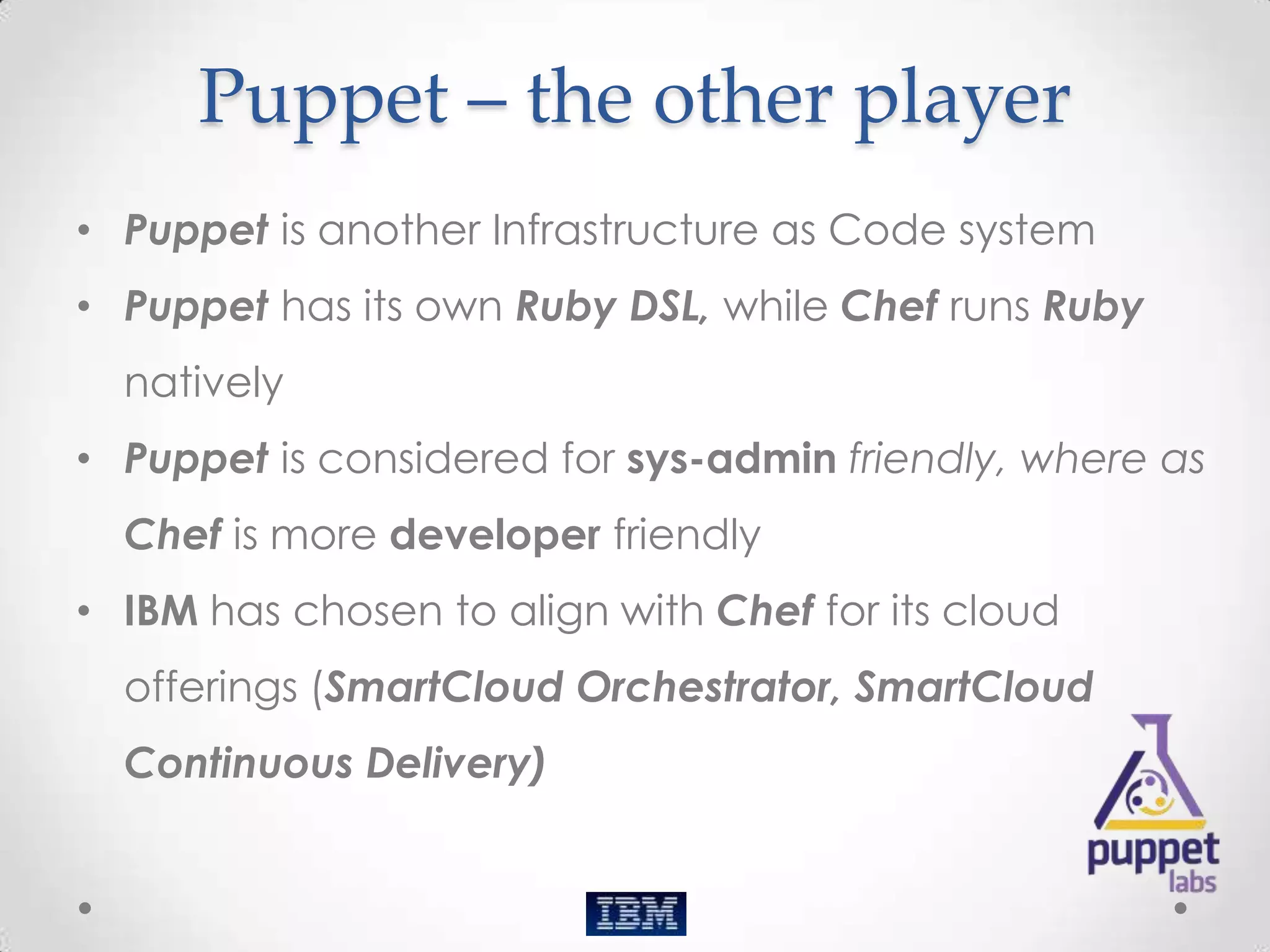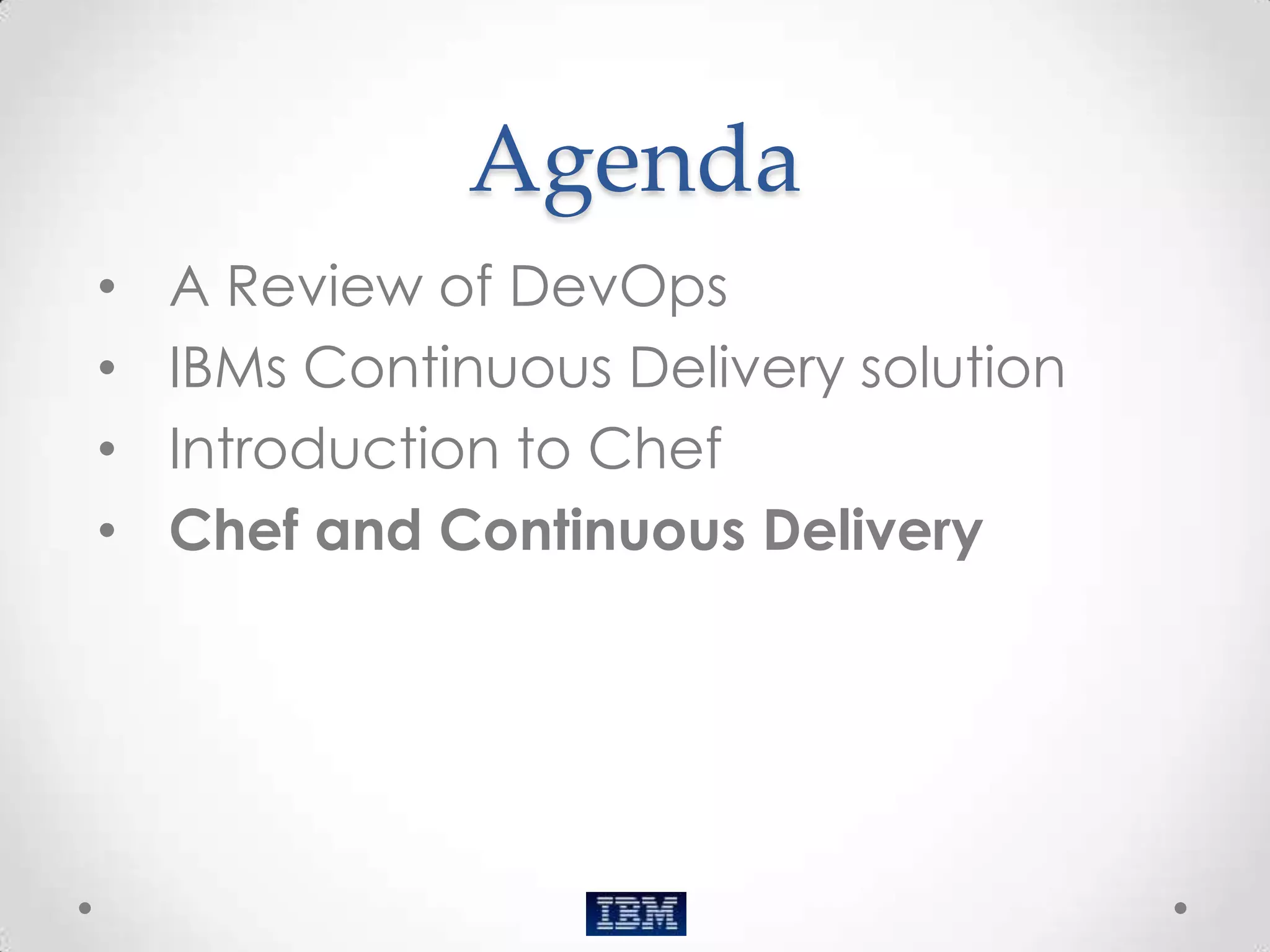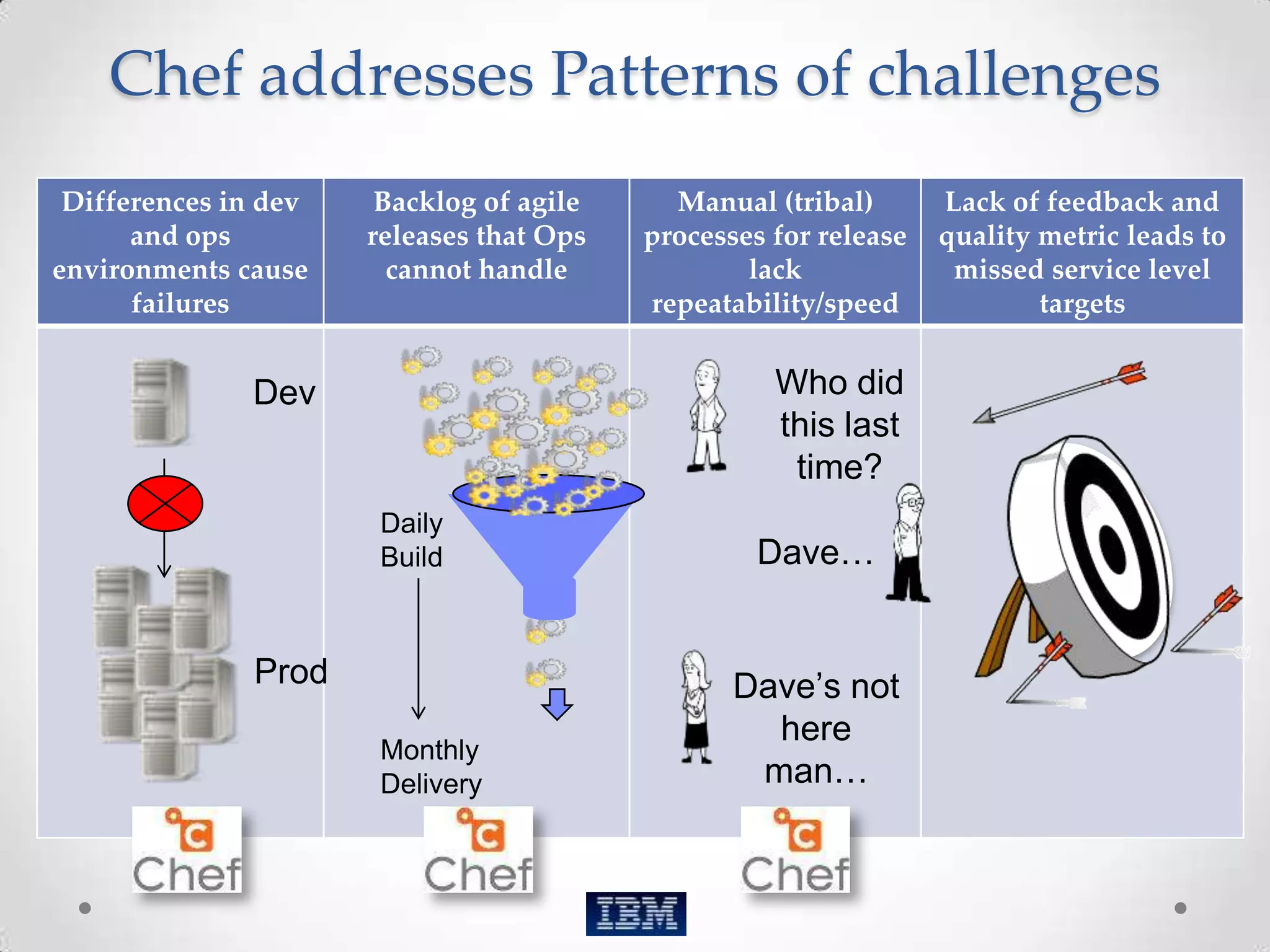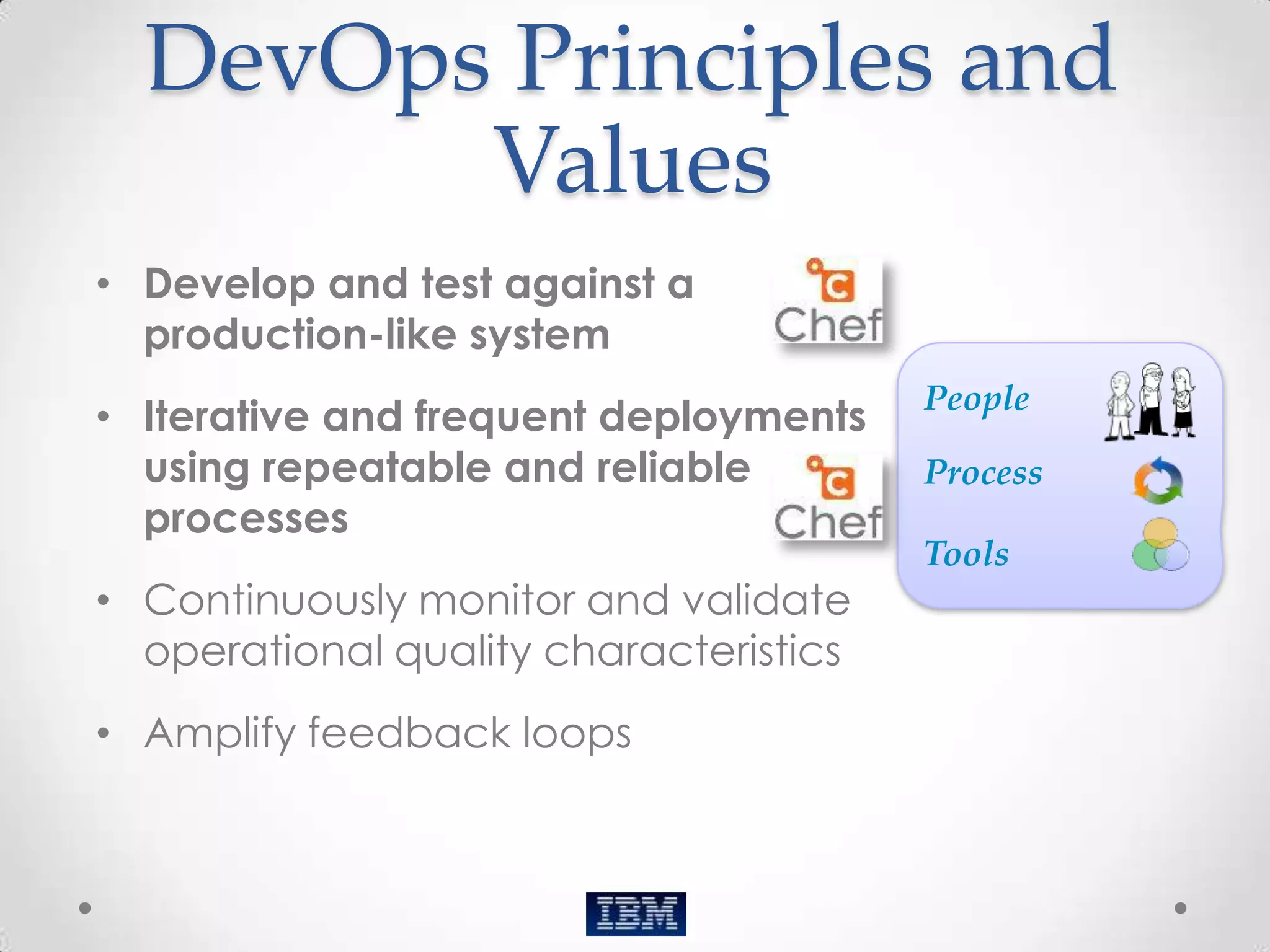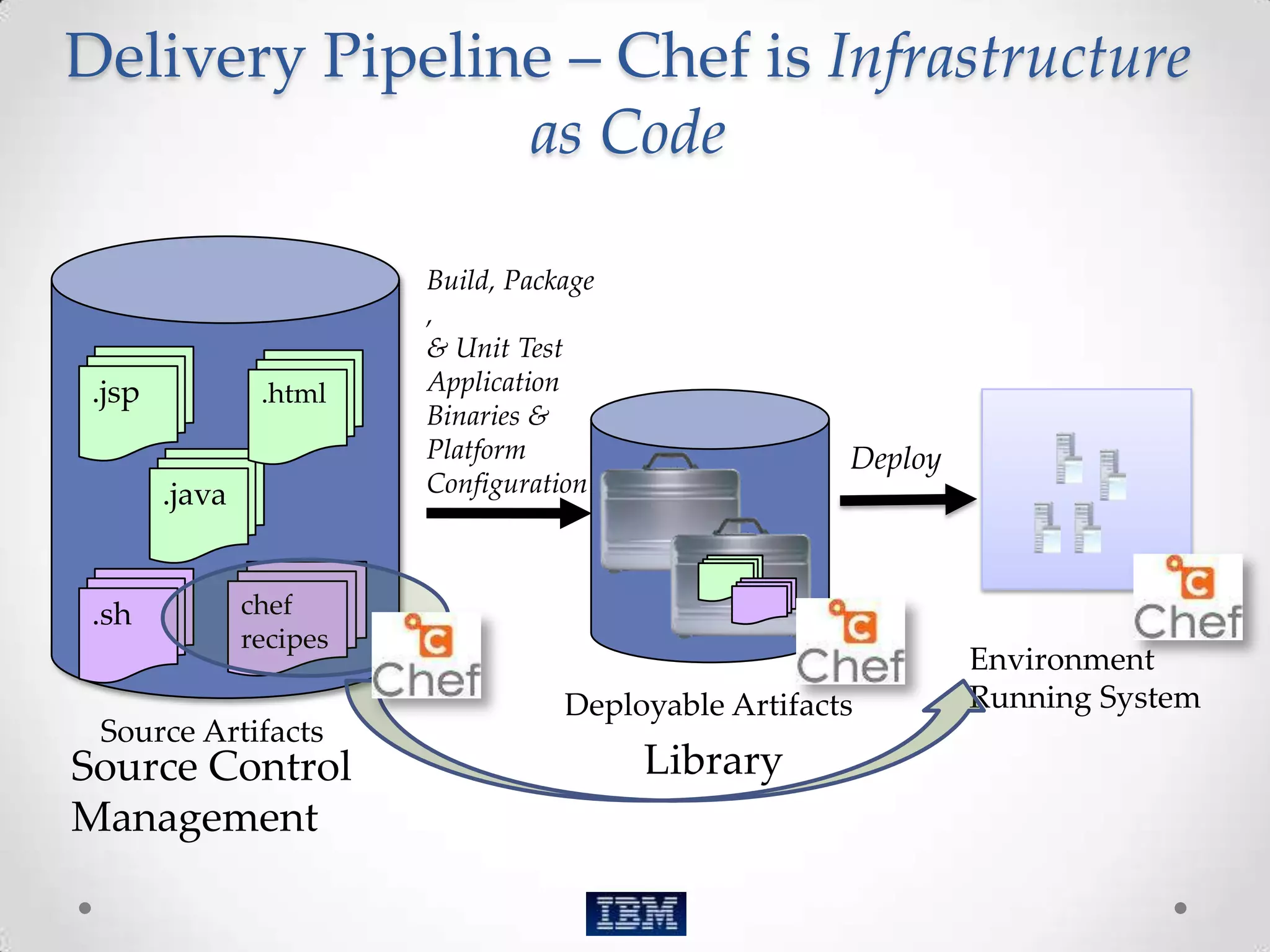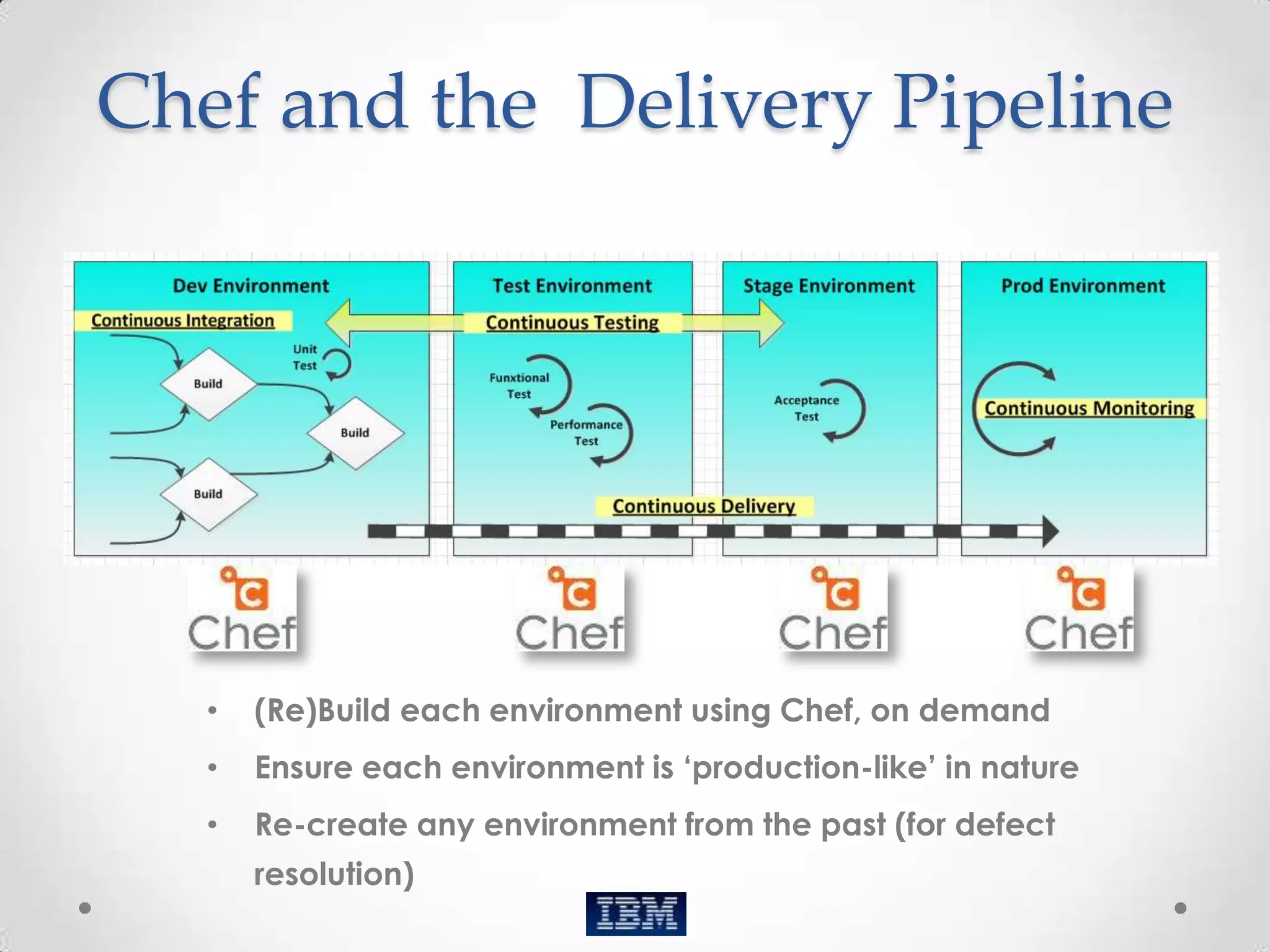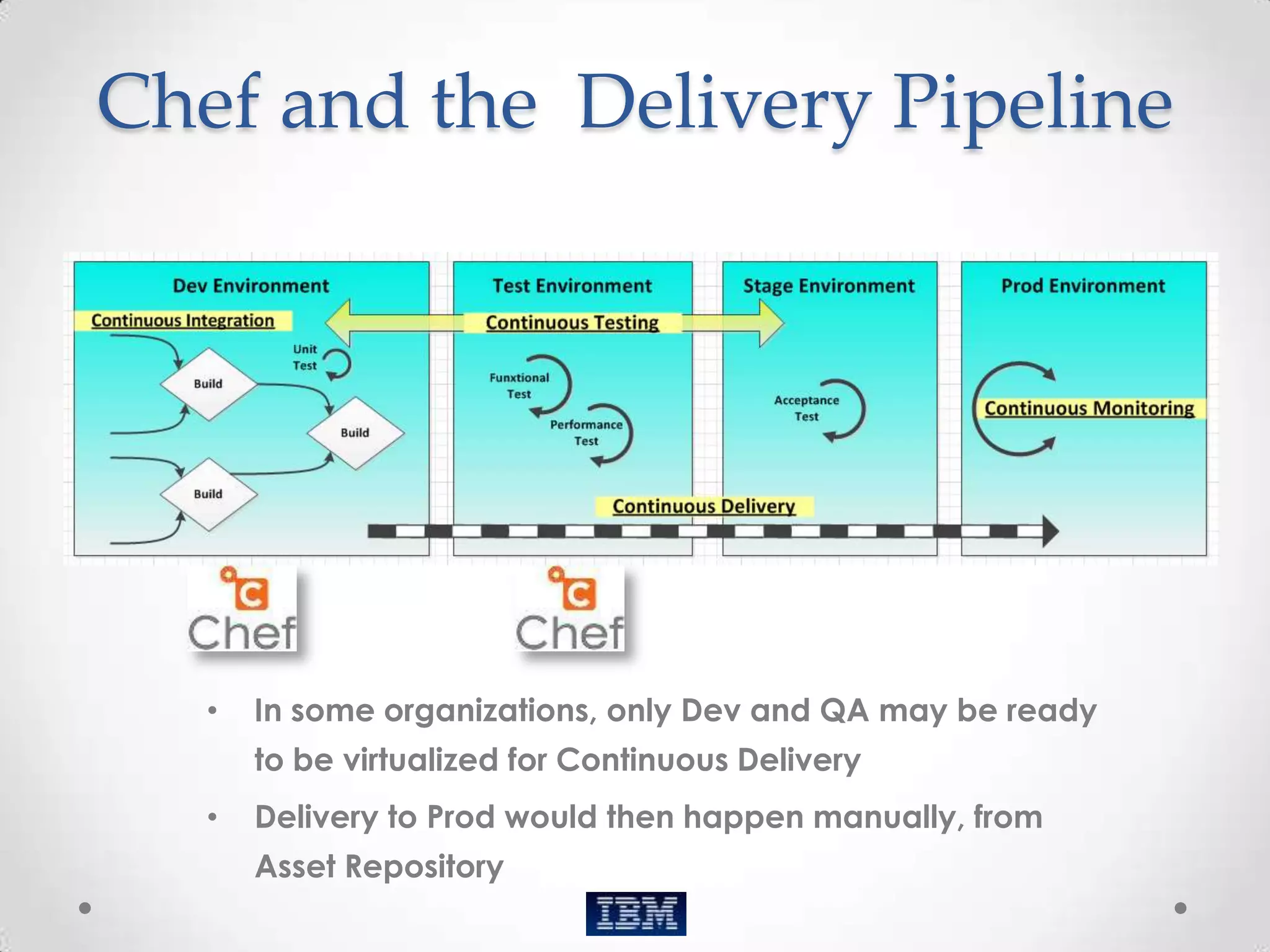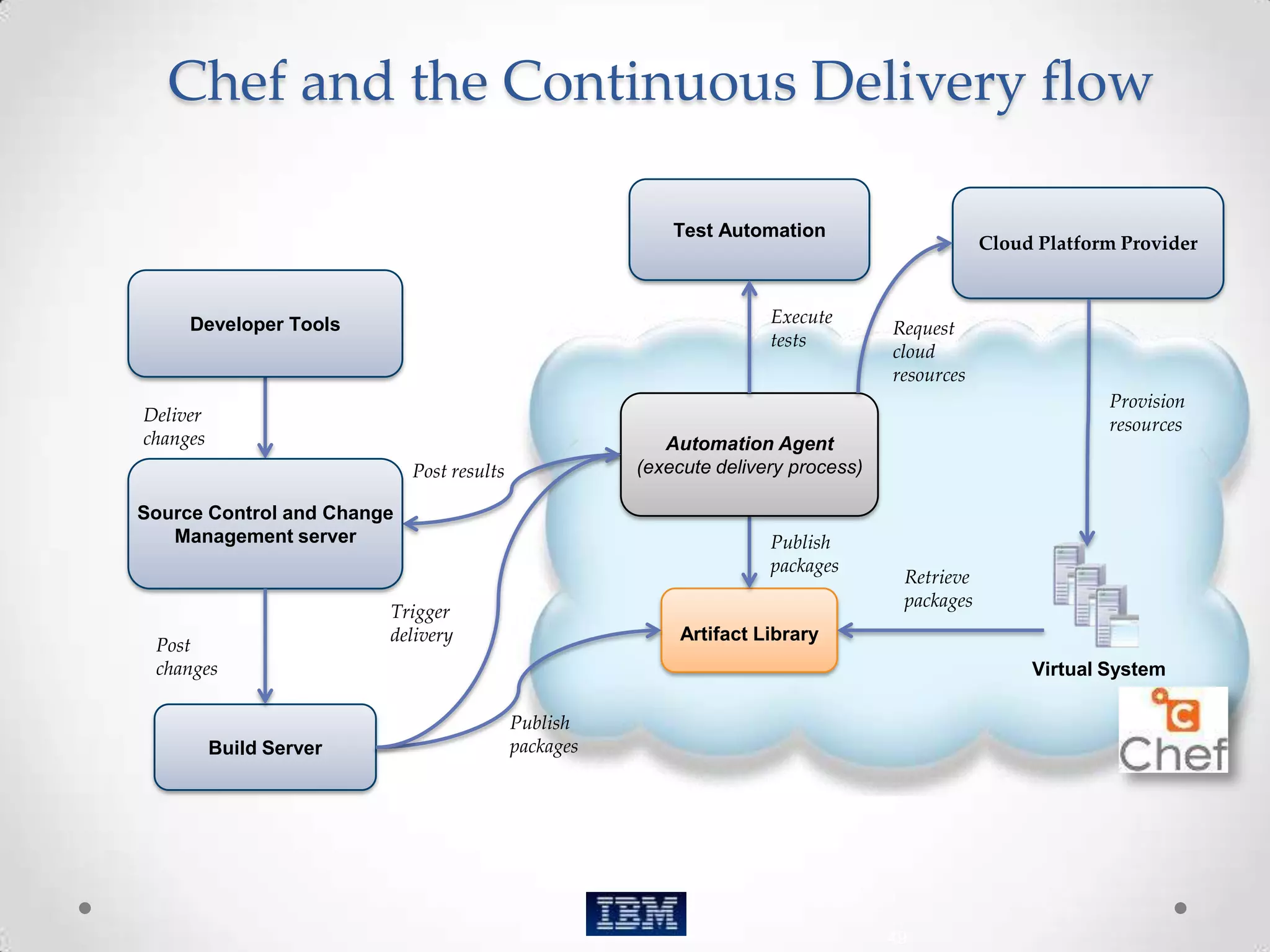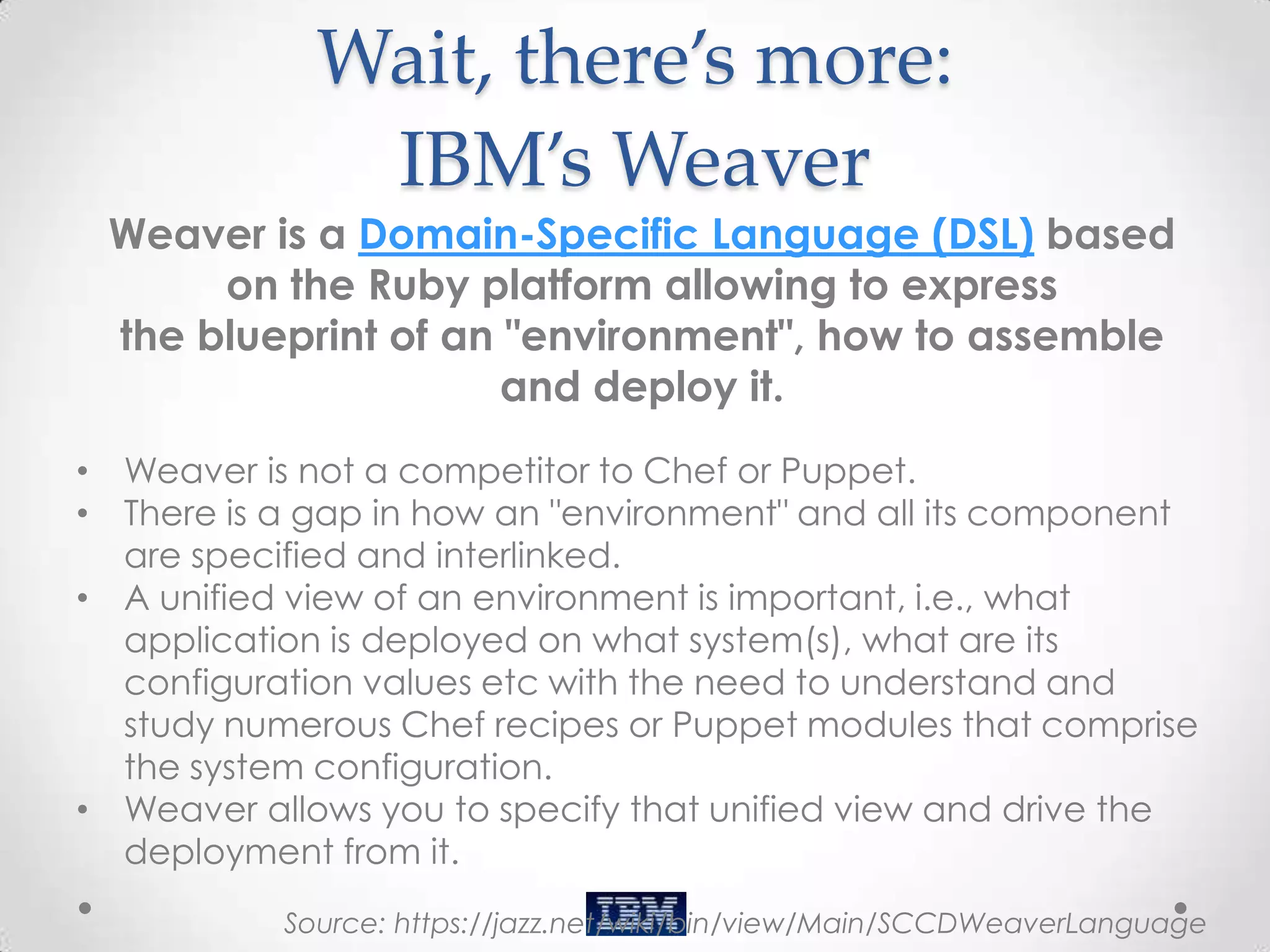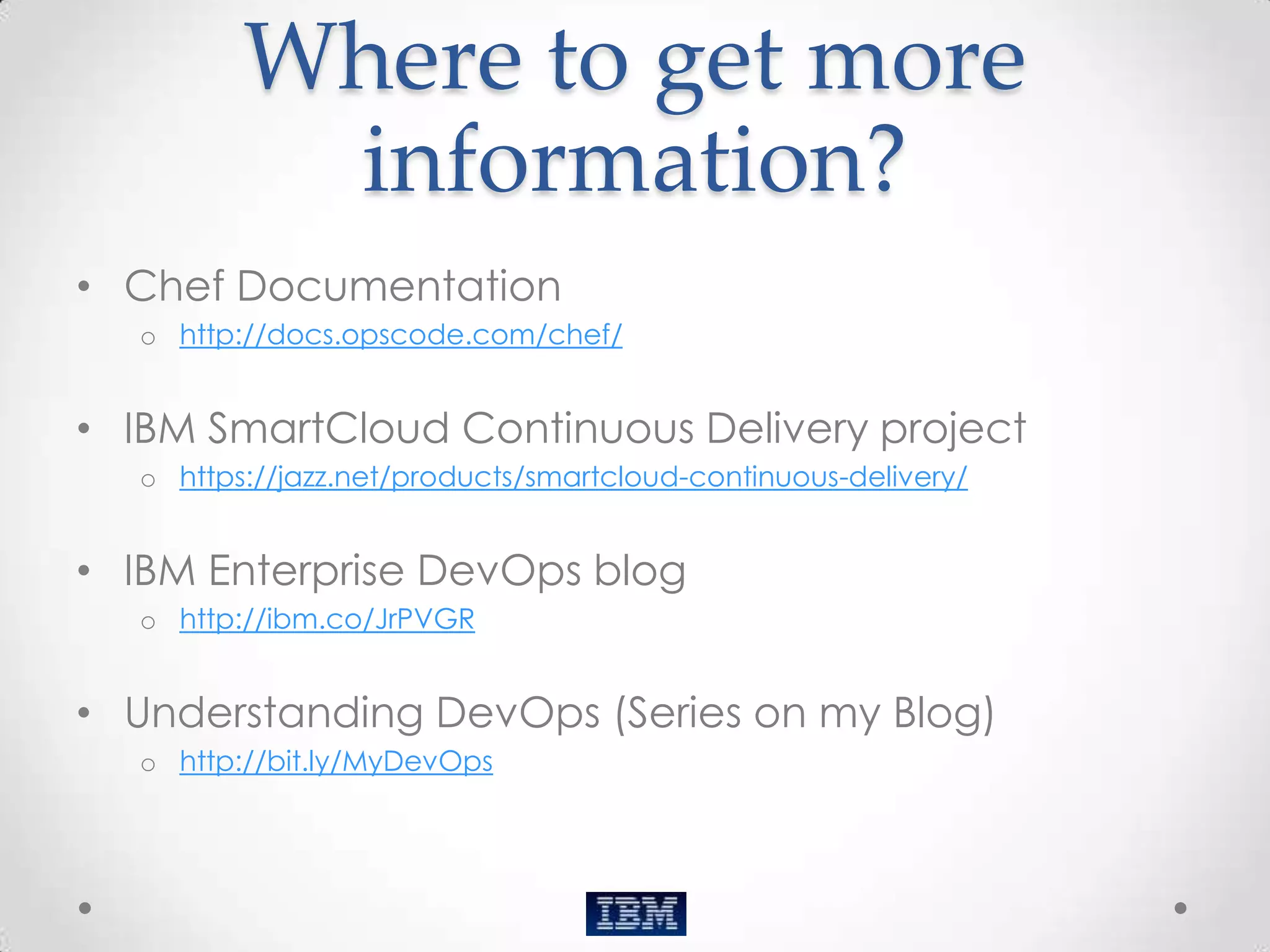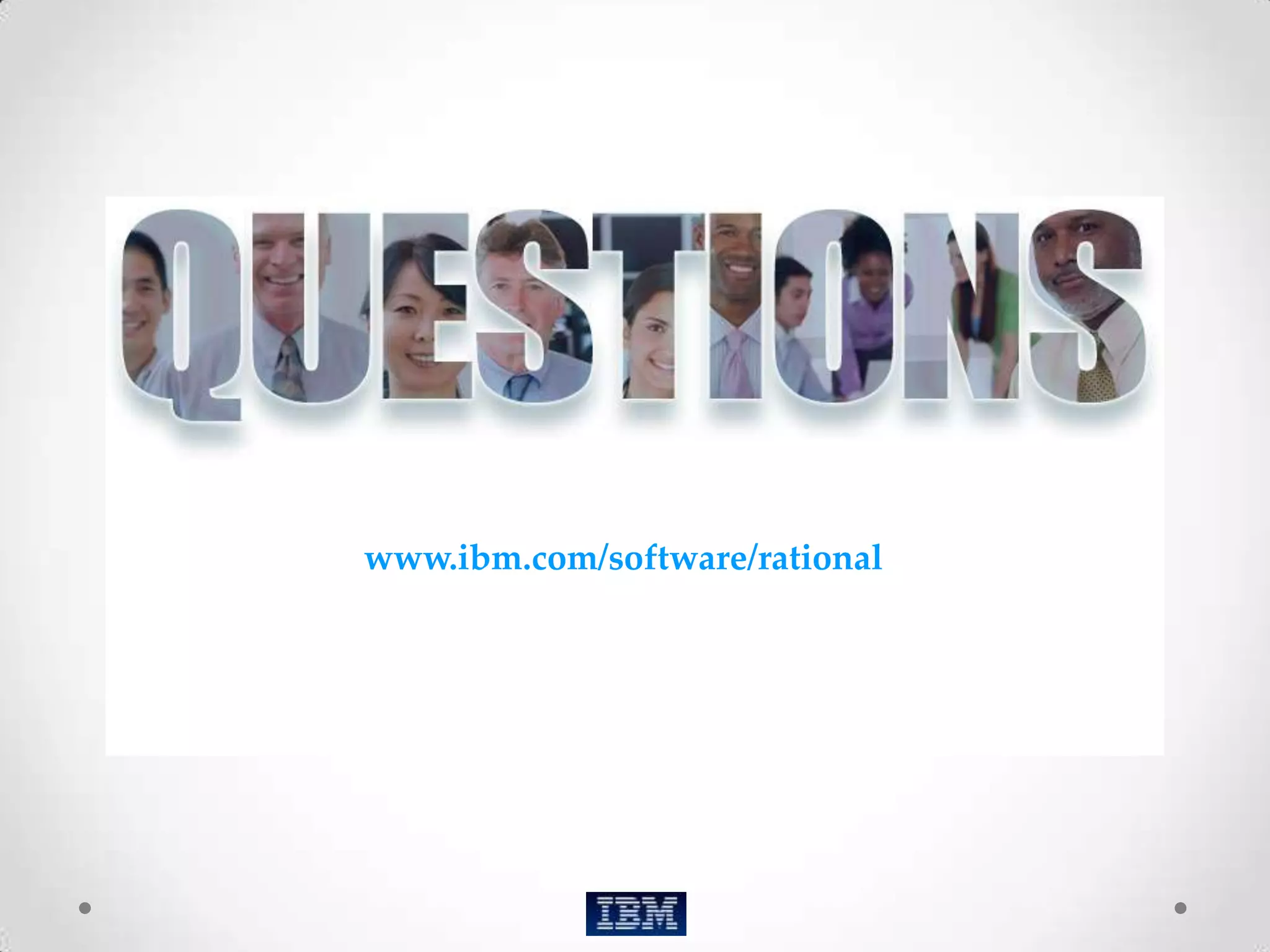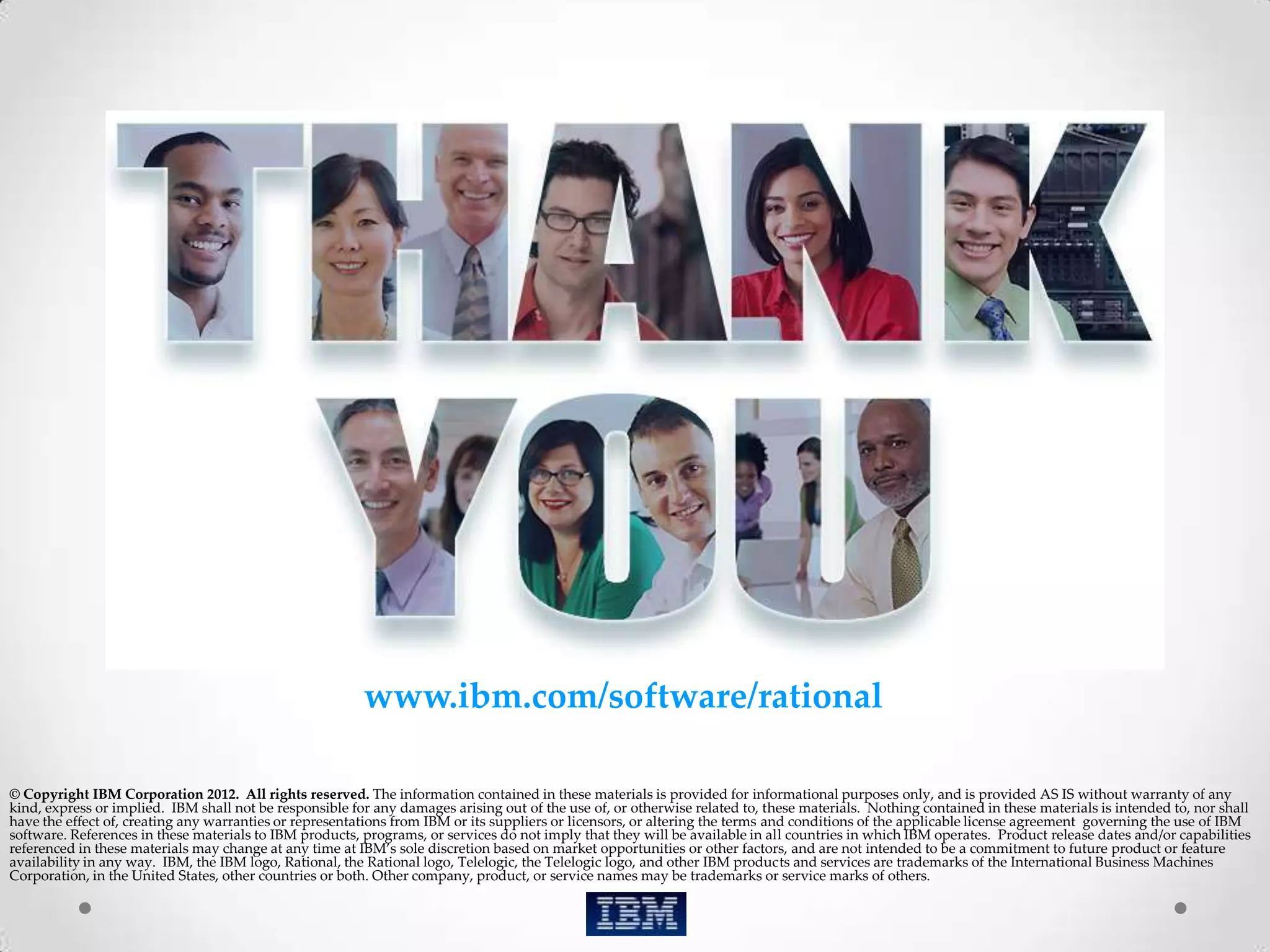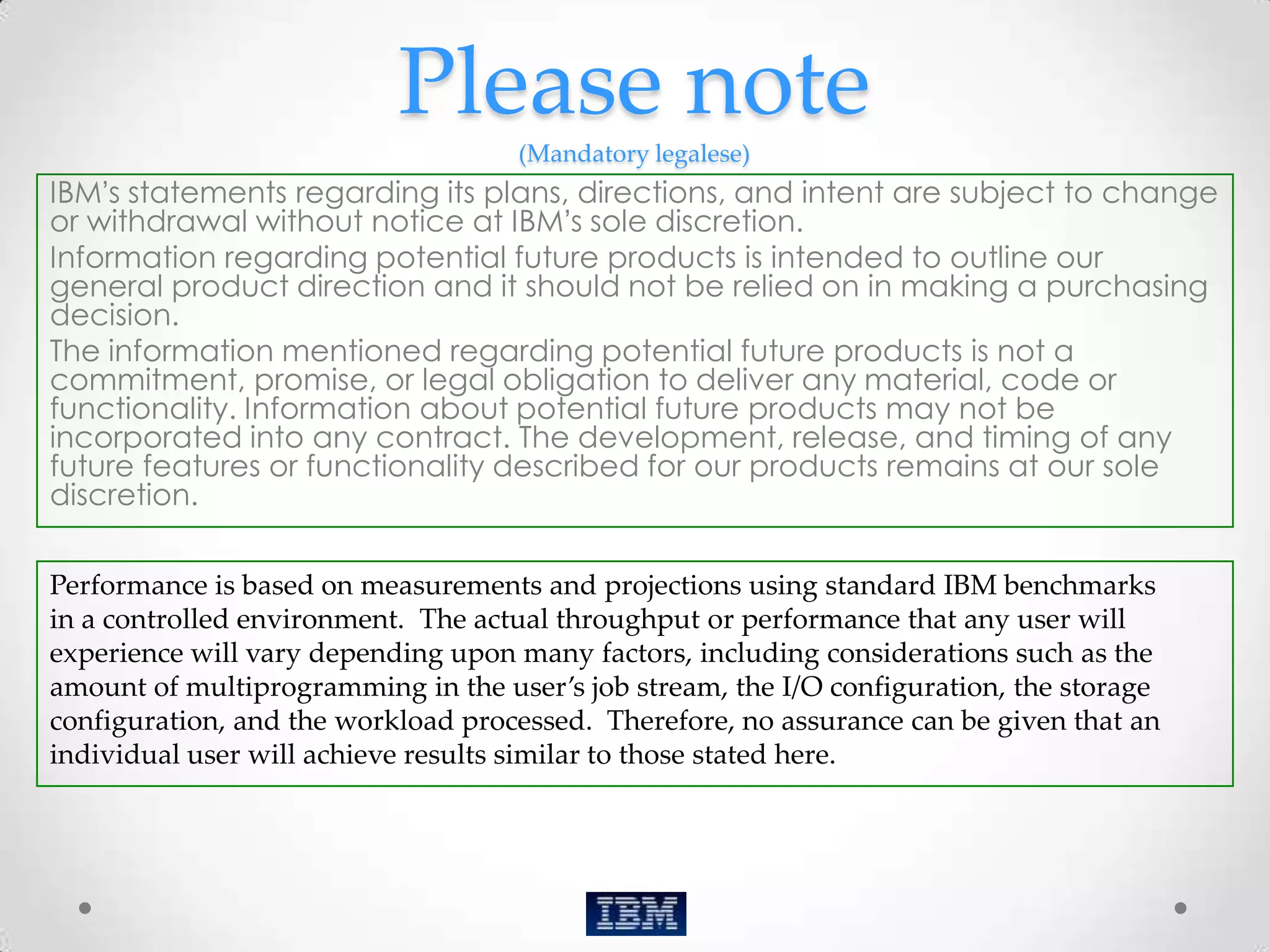The document provides an overview of DevOps principles and IBM's continuous delivery solutions, including the introduction of Chef as an automation platform for infrastructure management. It discusses the benefits of DevOps, such as increased deployment speed, improved collaboration between development and operations, and better quality assurance through automation. Additionally, it outlines the key concepts and architecture of Chef, highlighting its role in facilitating continuous integration and delivery in software development.
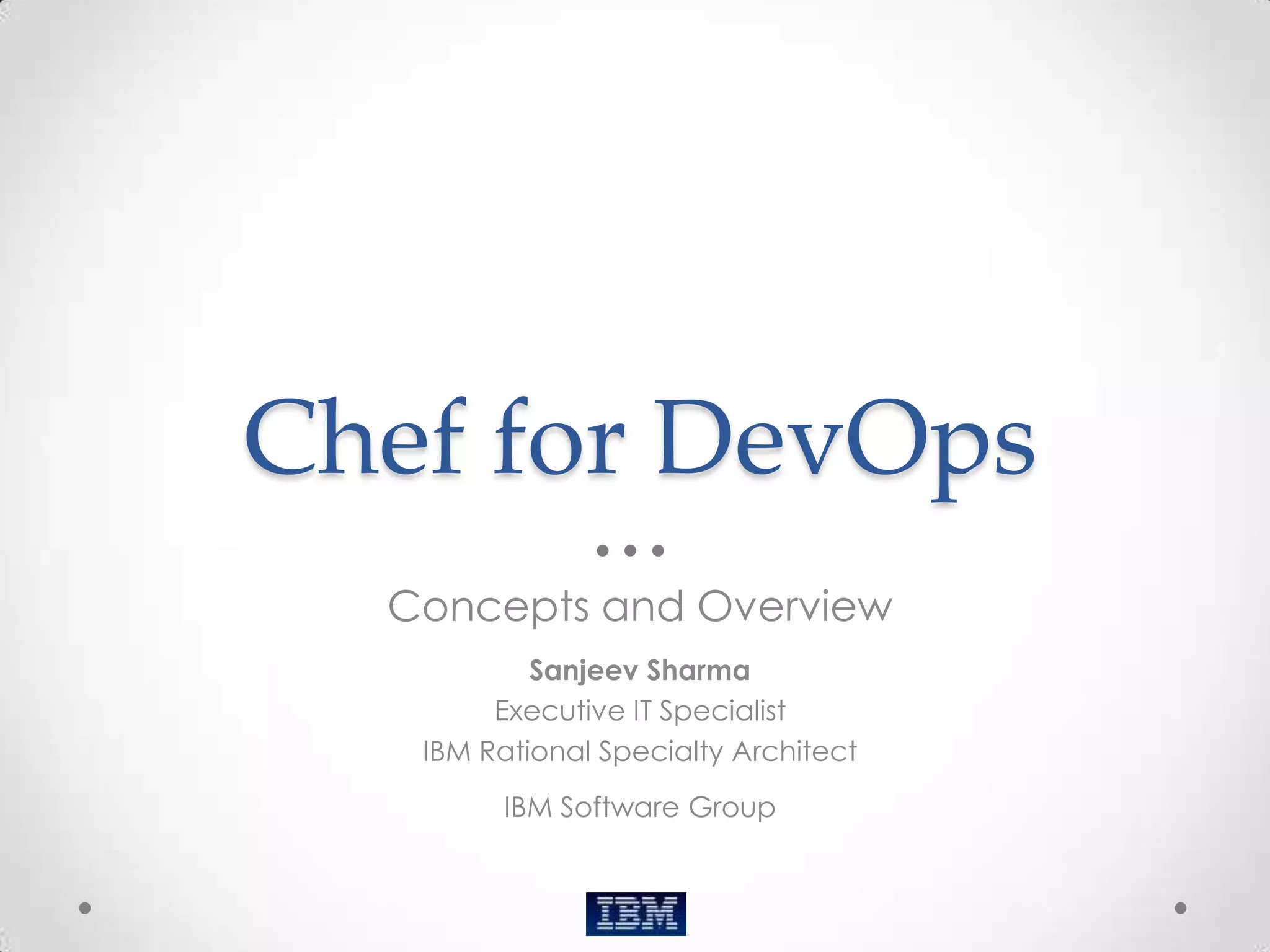
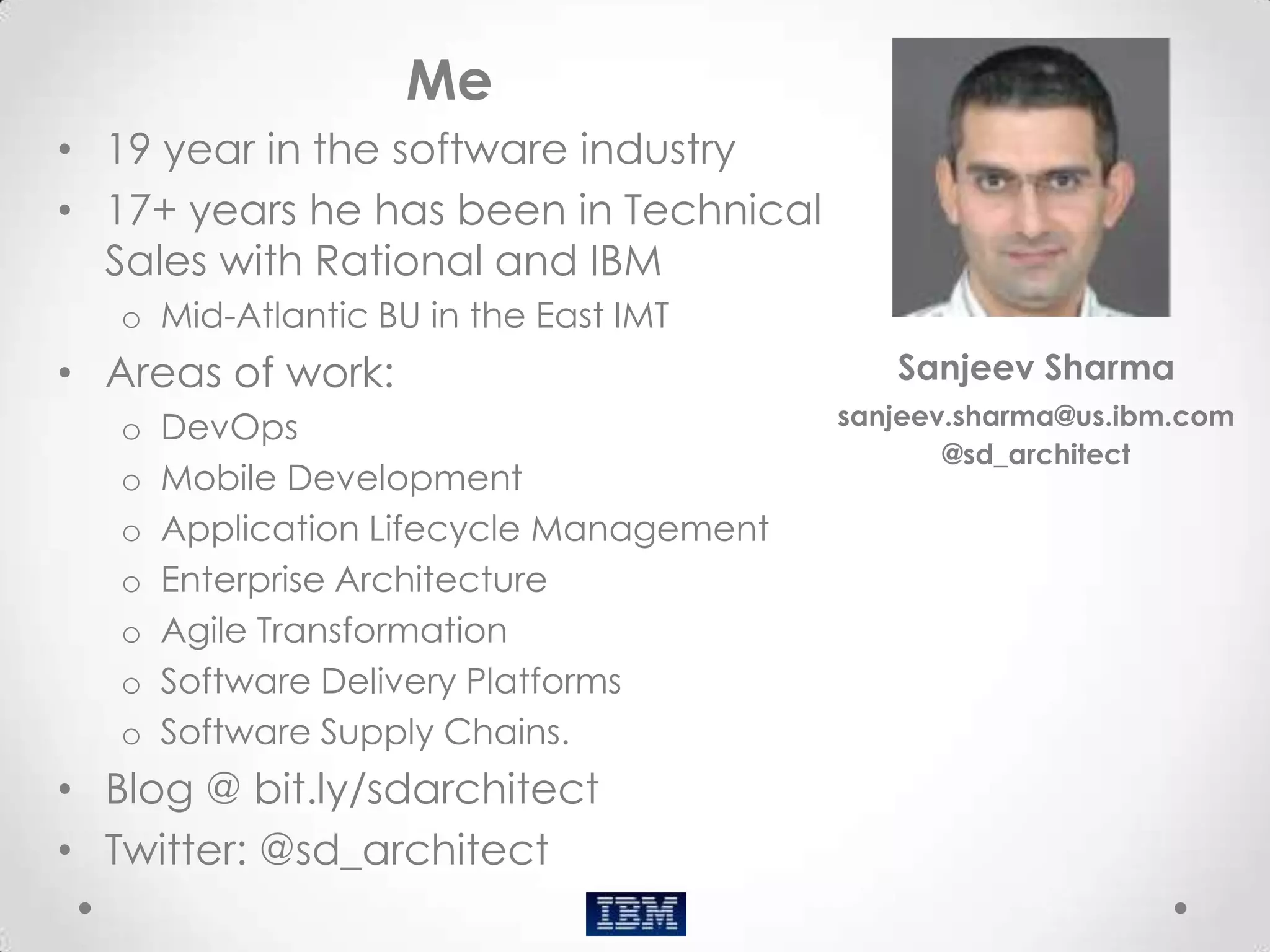
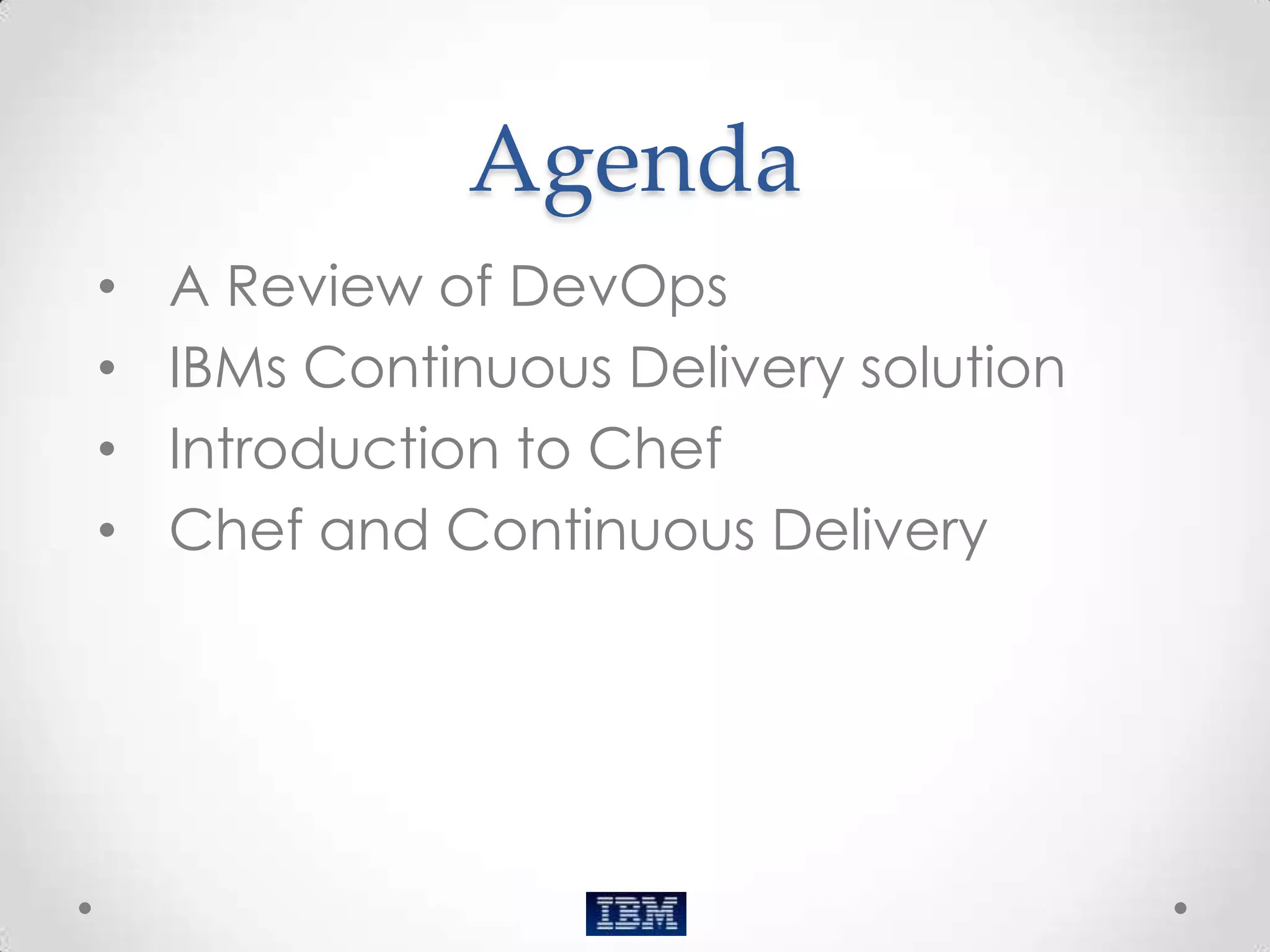
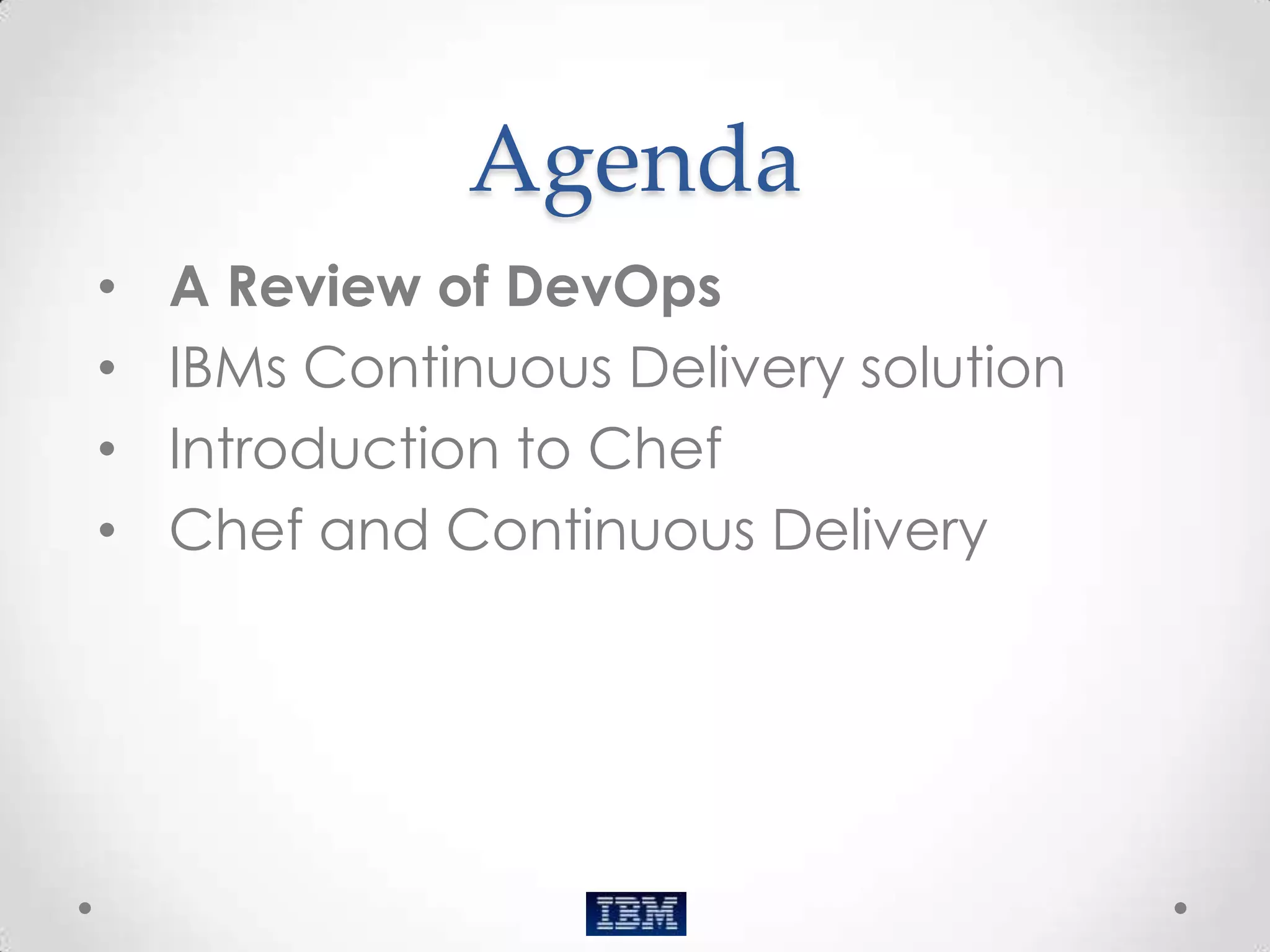
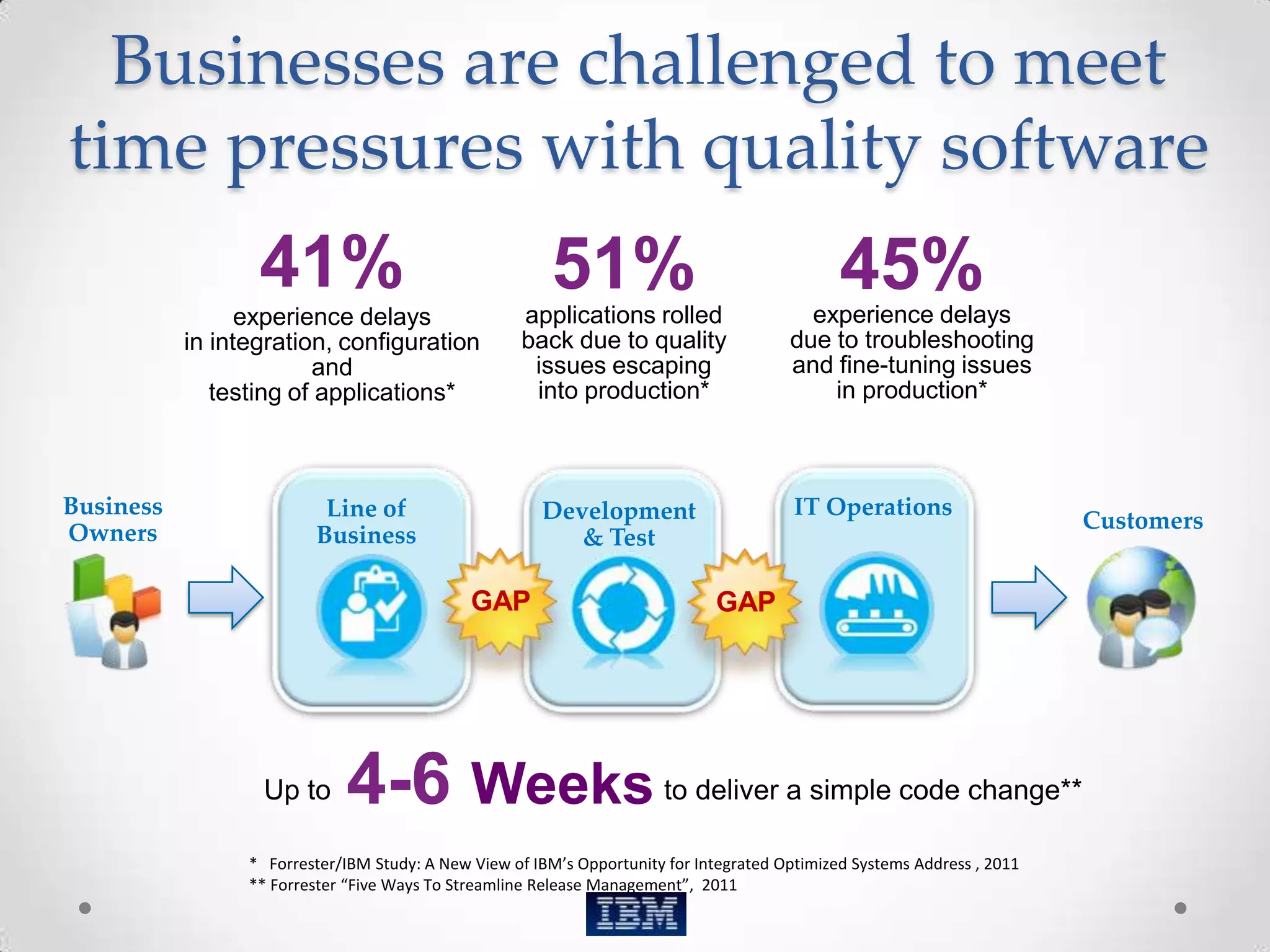
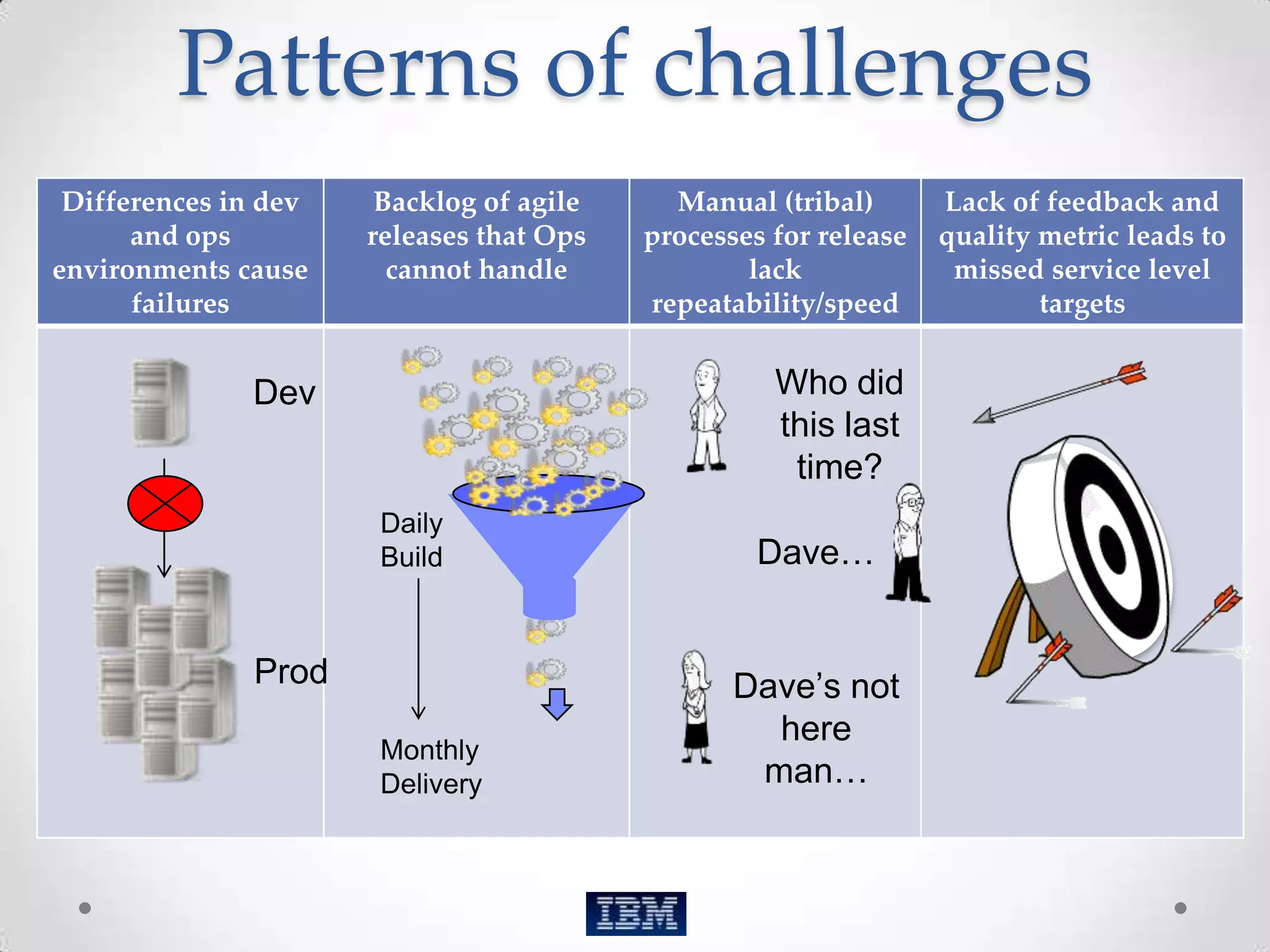
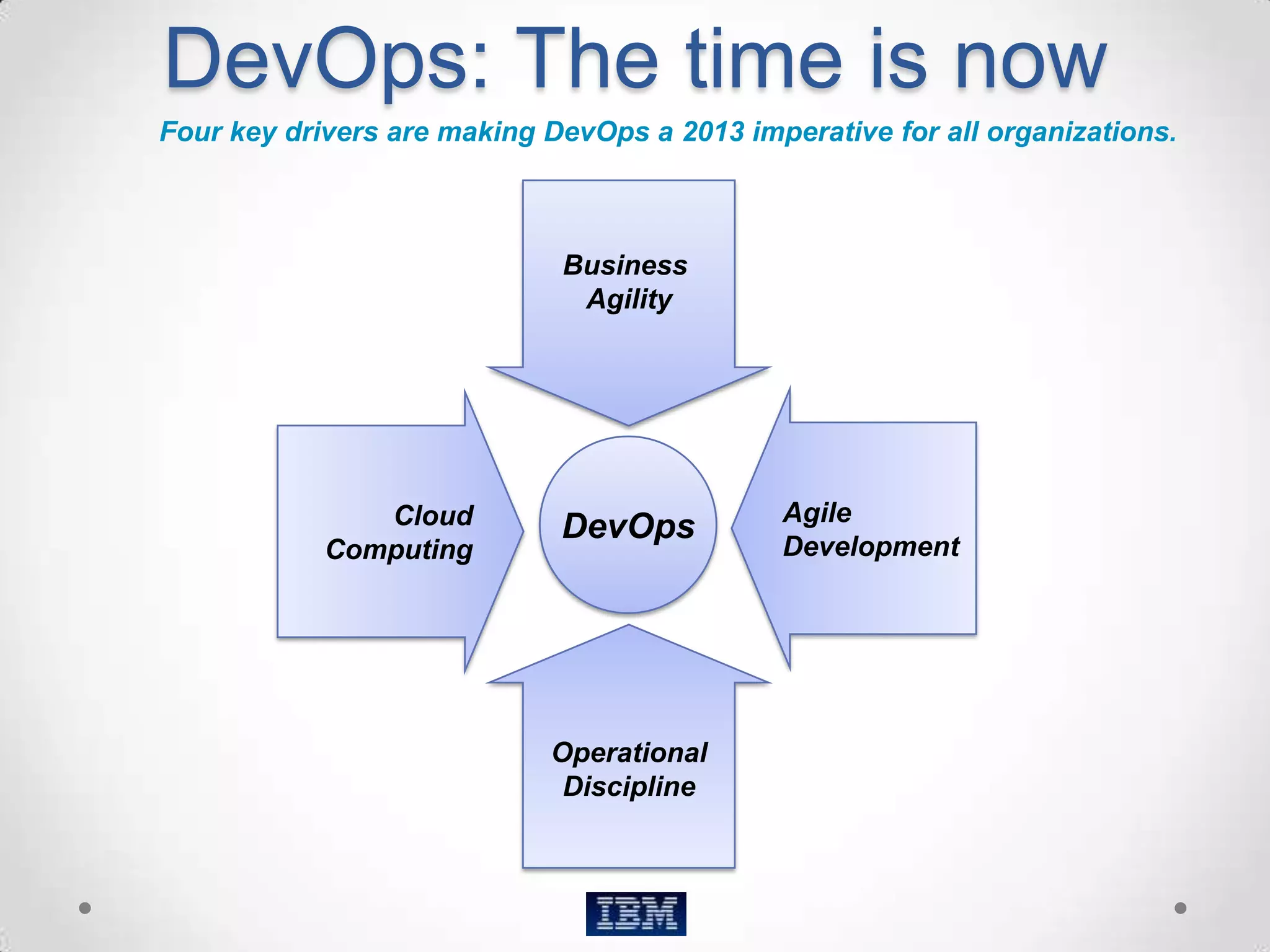
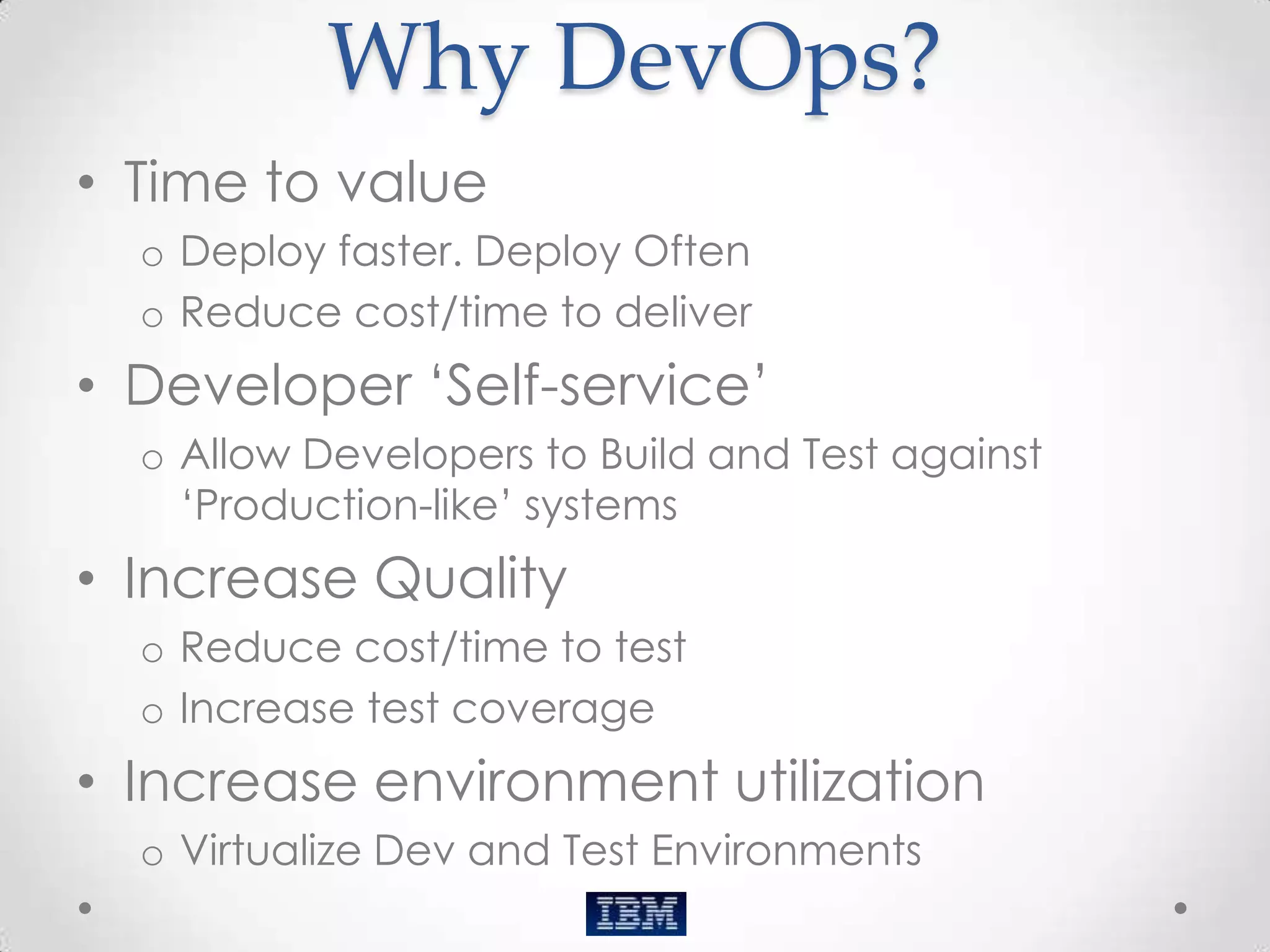
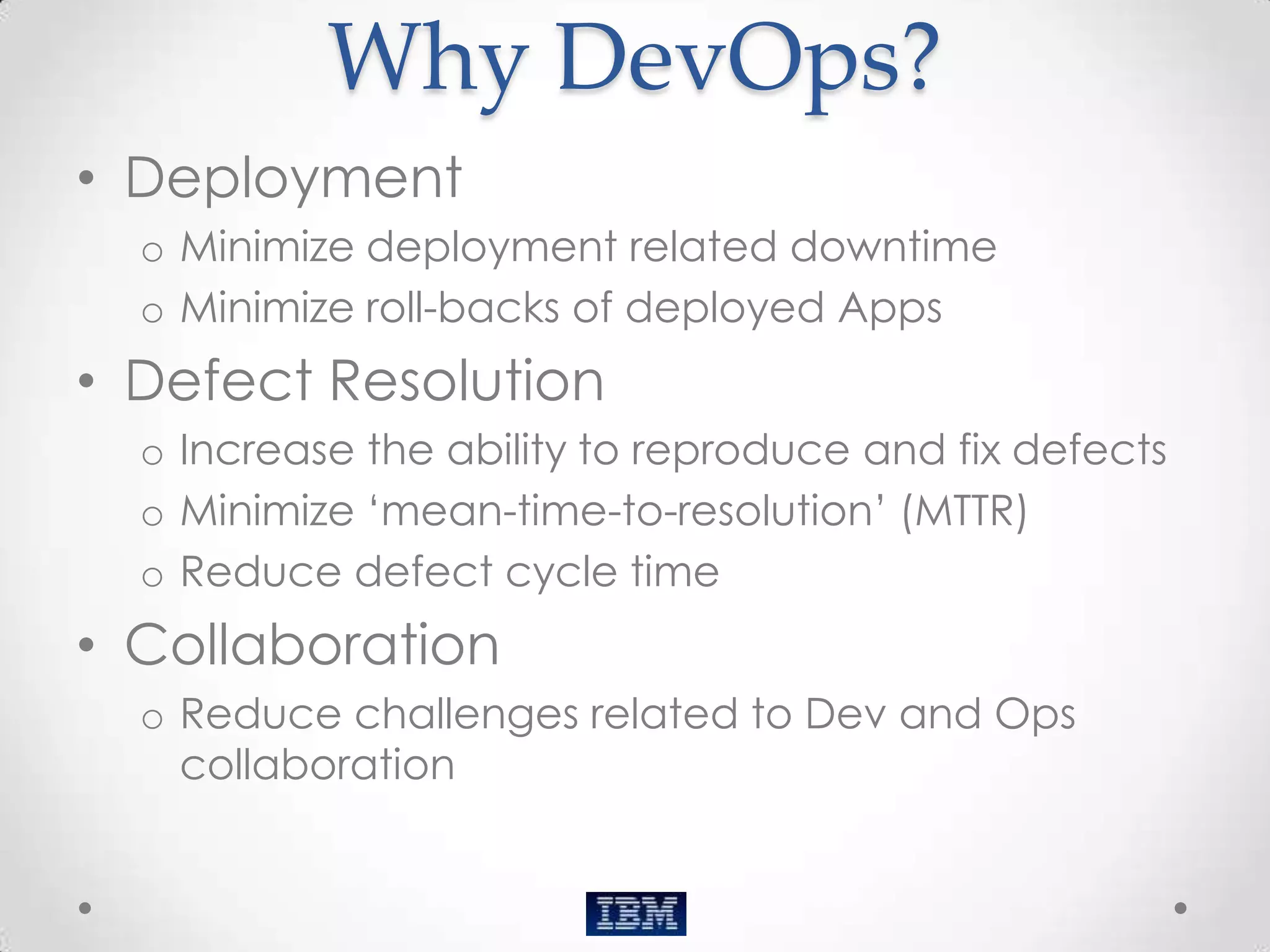
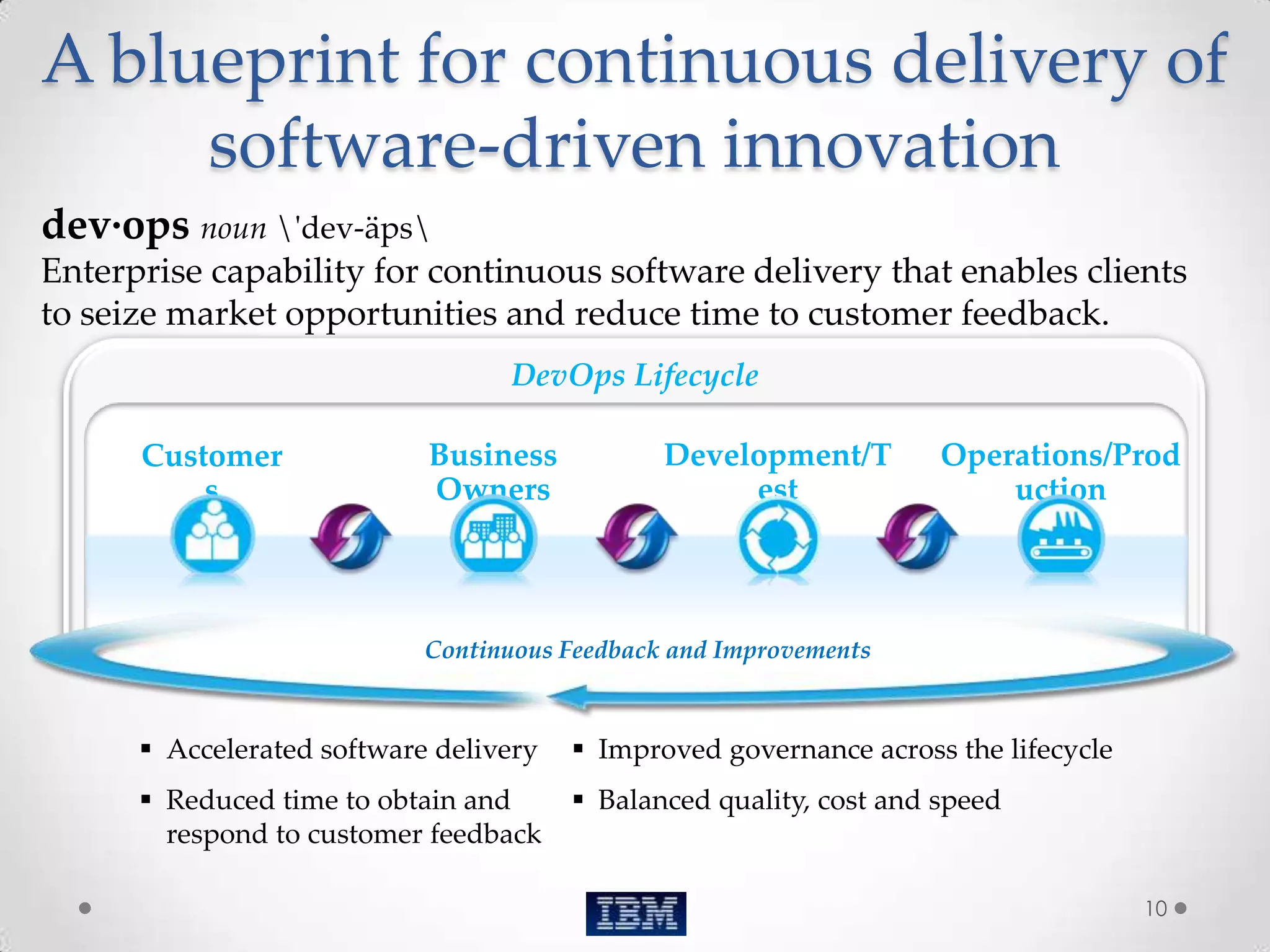
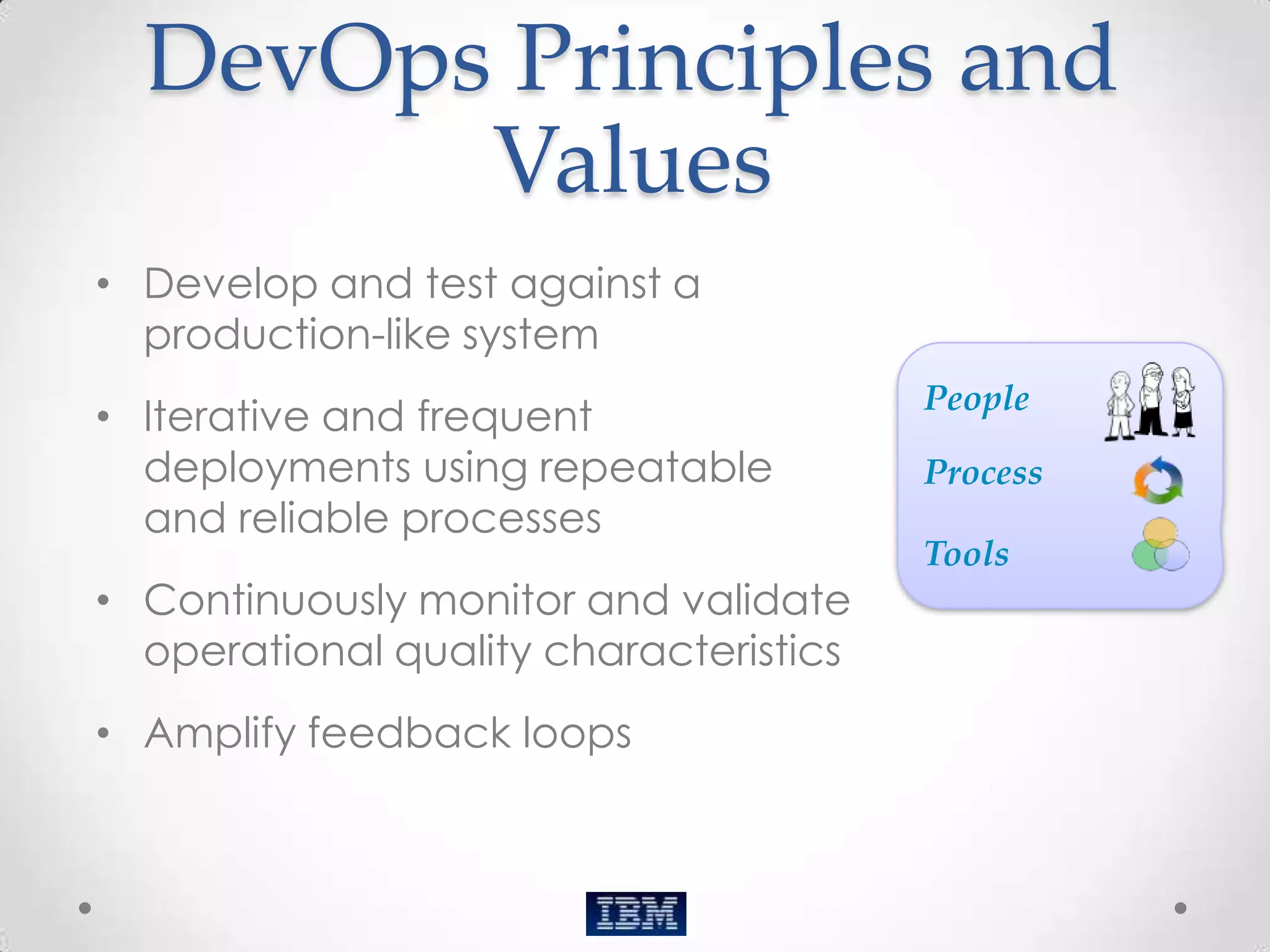
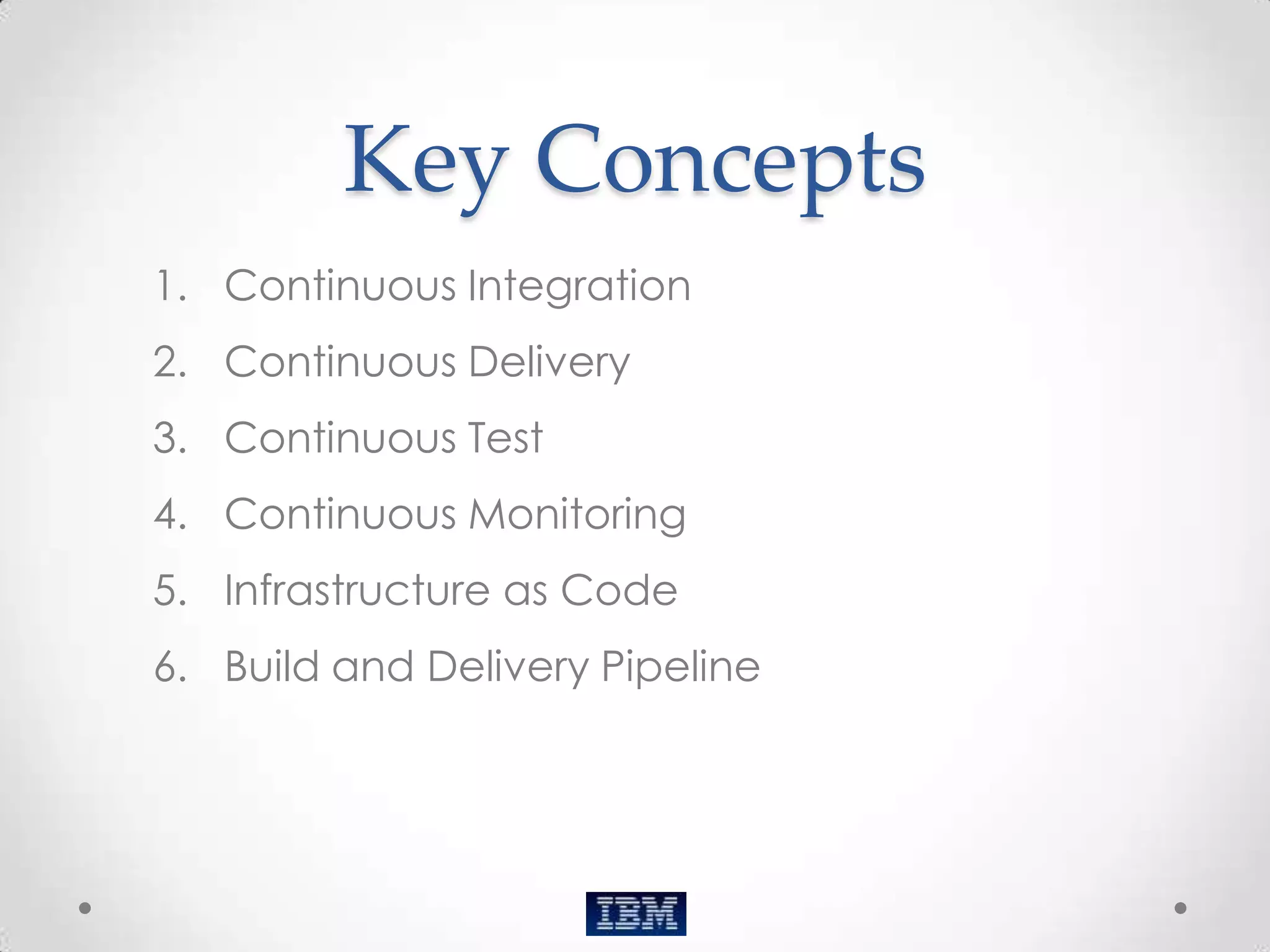
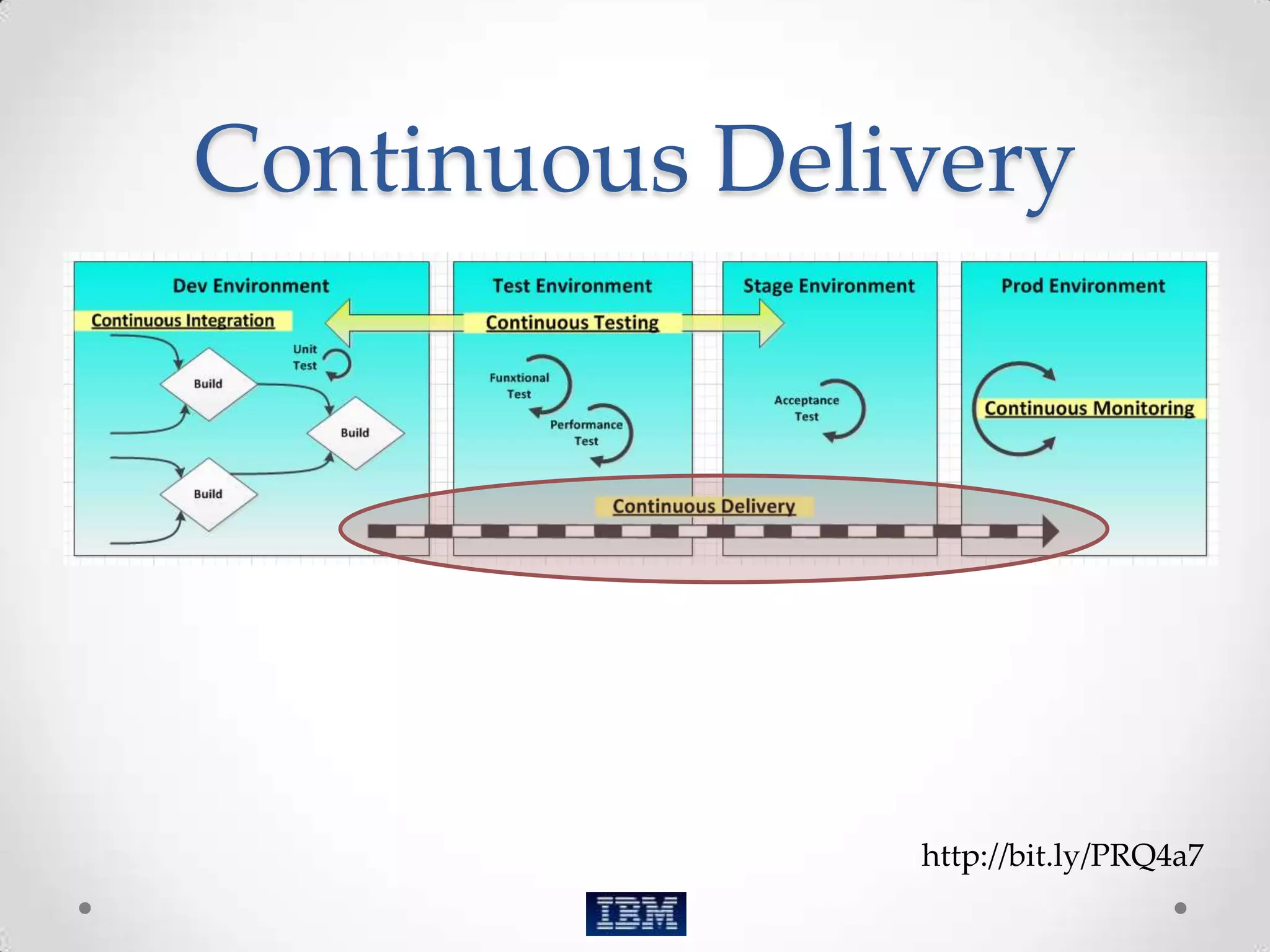
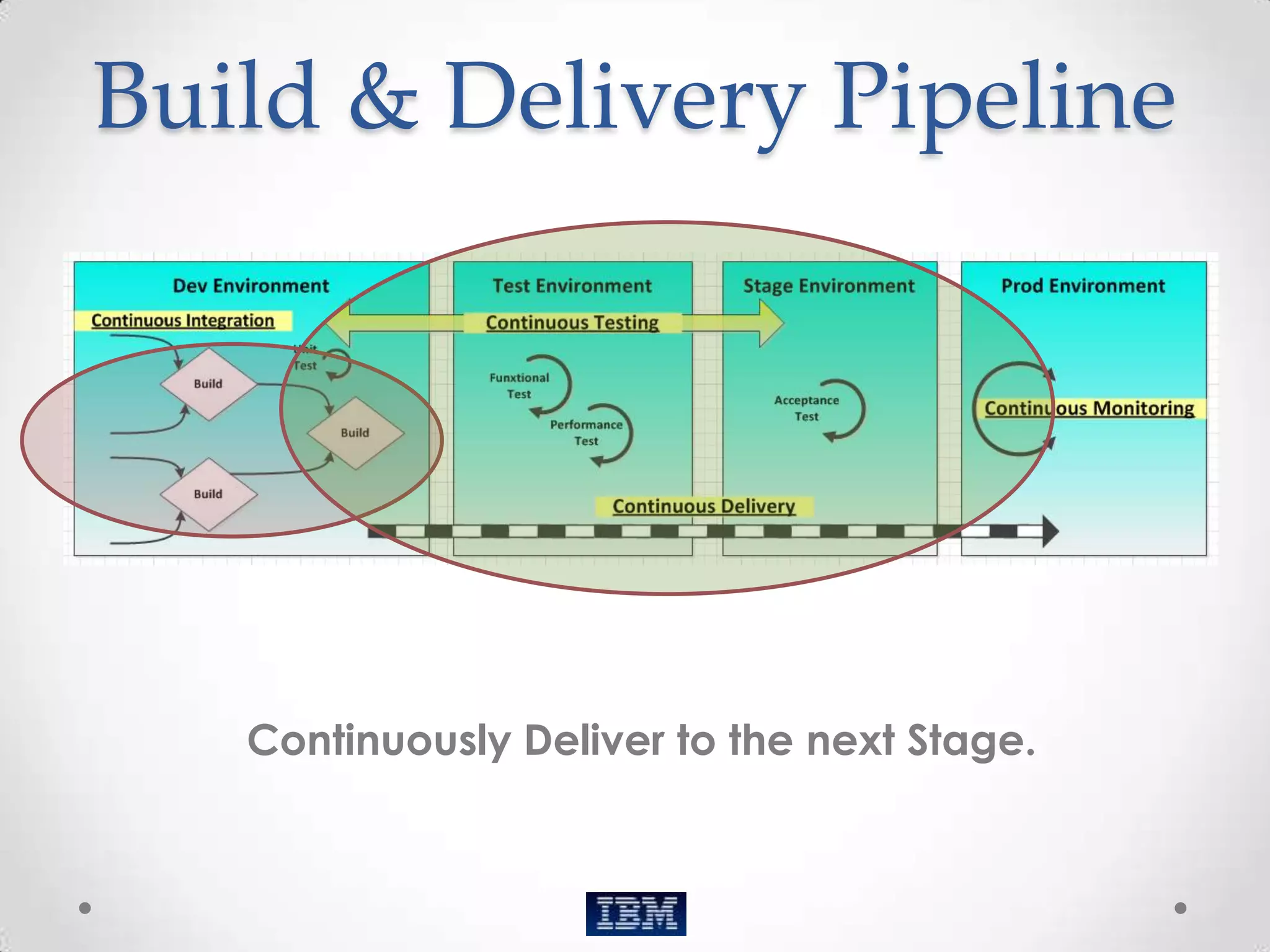
![Infrastructure as Code/Software
Defined Environment
package "apache2" do
package_name node['apache']['package']
end
service "apache2" do
case node['platform_family']
when "rhel", "fedora", "suse"
service_name "httpd"
# If restarted/reloaded too quickly httpd has a habit of failing.
# This may happen with multiple recipes notifying apache to restart - like
# during the initial bootstrap.
restart_command "/sbin/service httpd restart && sleep 1"
reload_command "/sbin/service httpd reload && sleep 1"
Enter Chef!](https://image.slidesharecdn.com/cheffordevops-anintroduction-130402100124-phpapp01/75/Chef-for-DevOps-an-Introduction-15-2048.jpg)
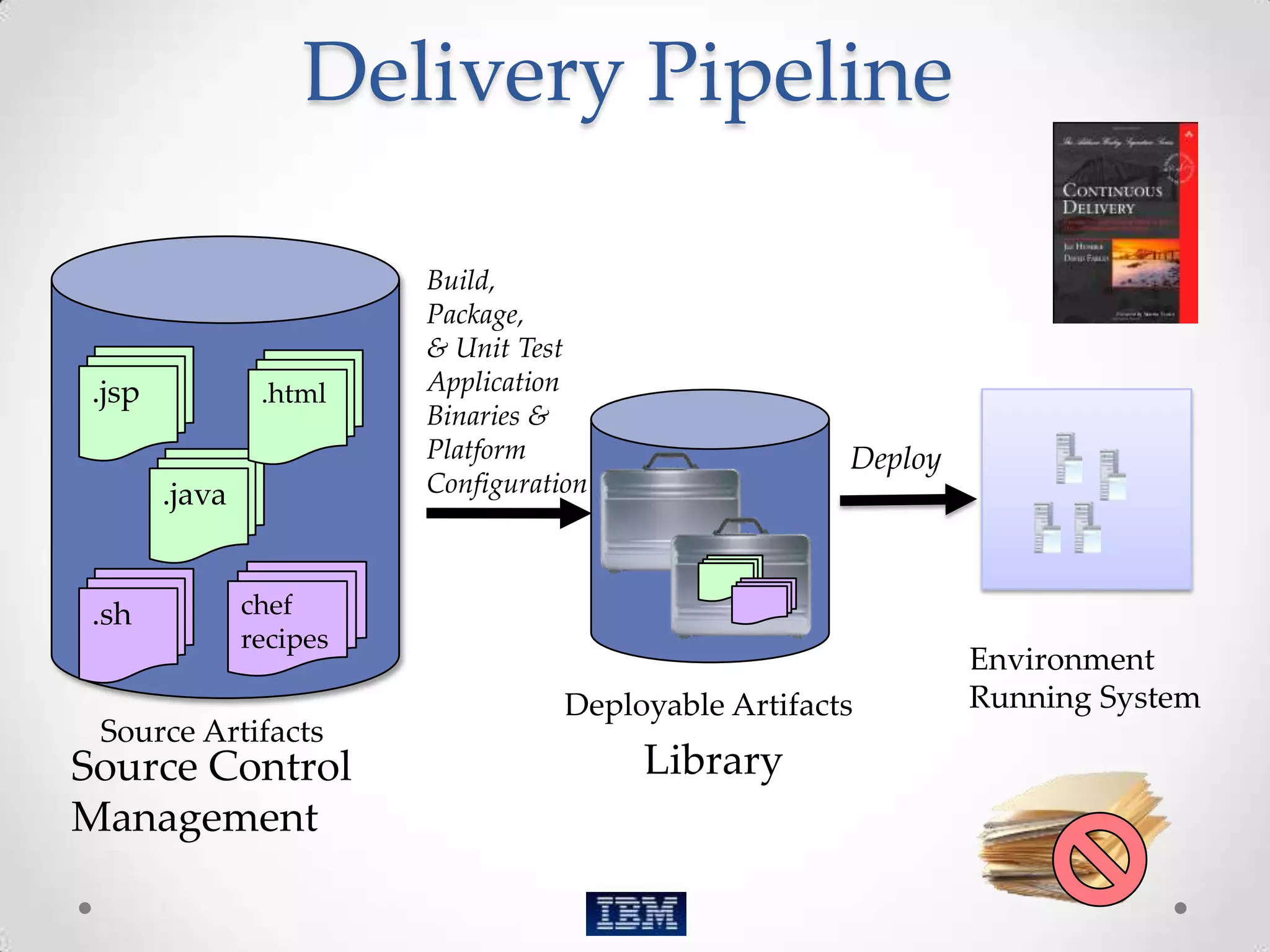
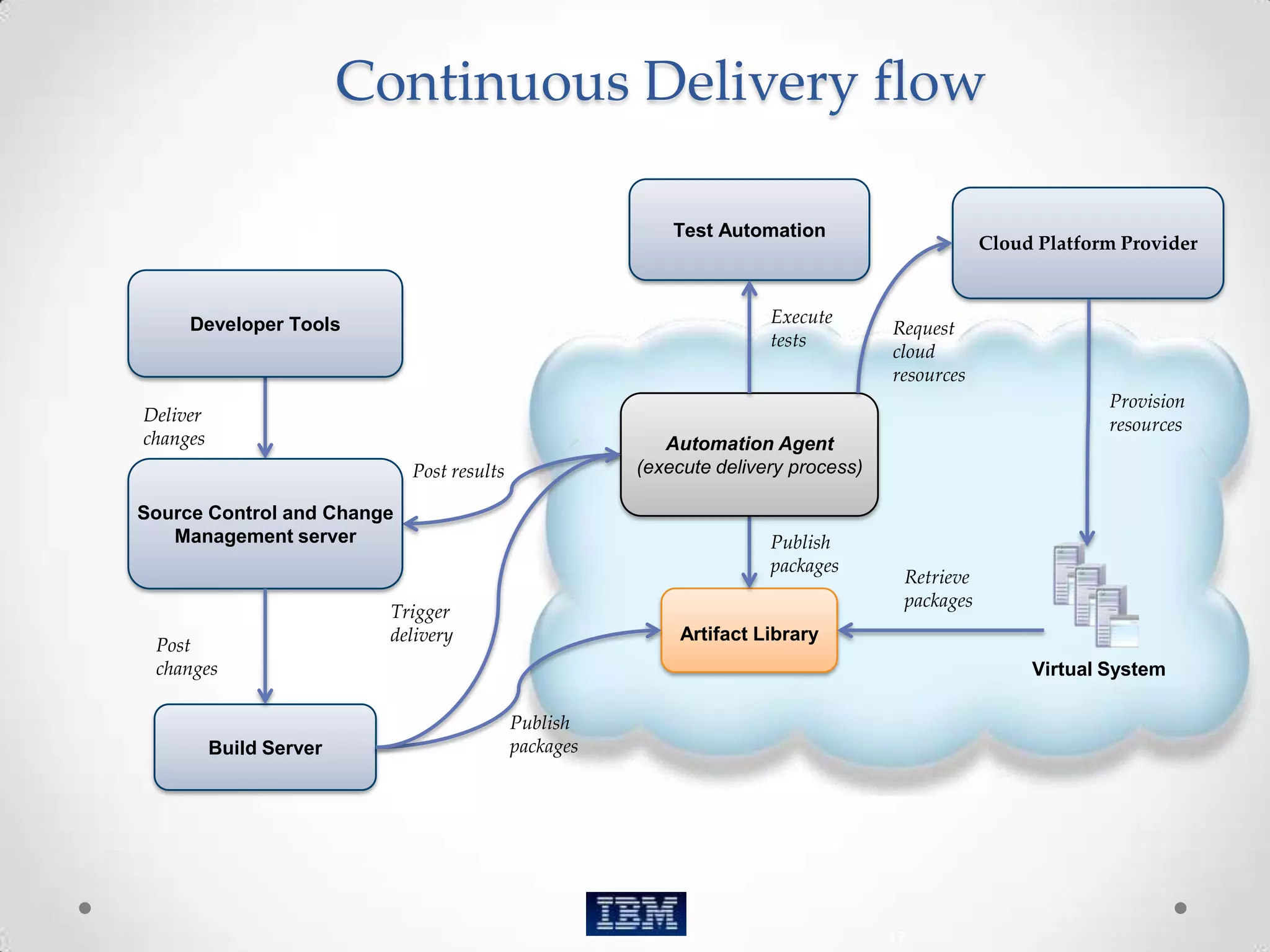
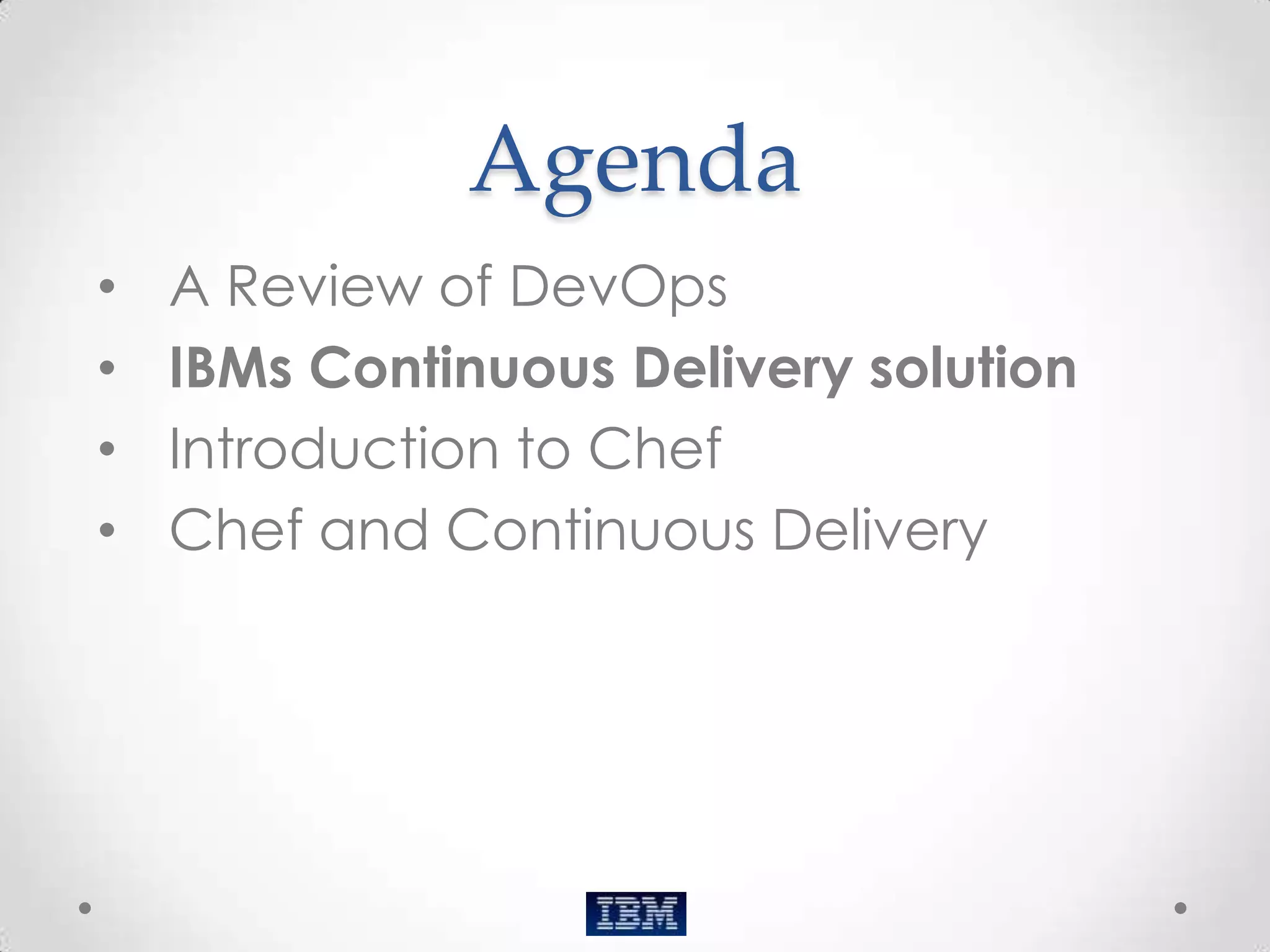
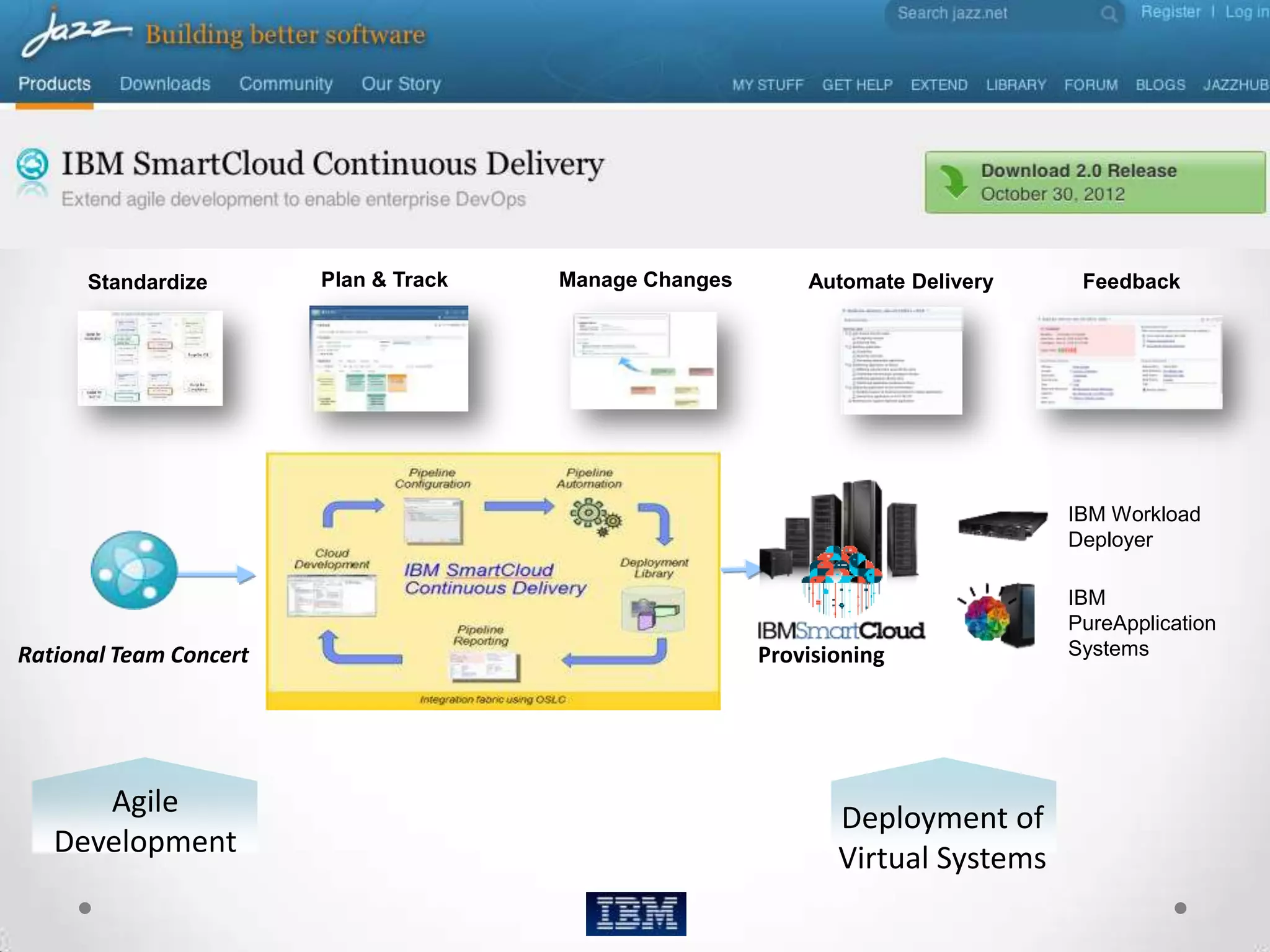
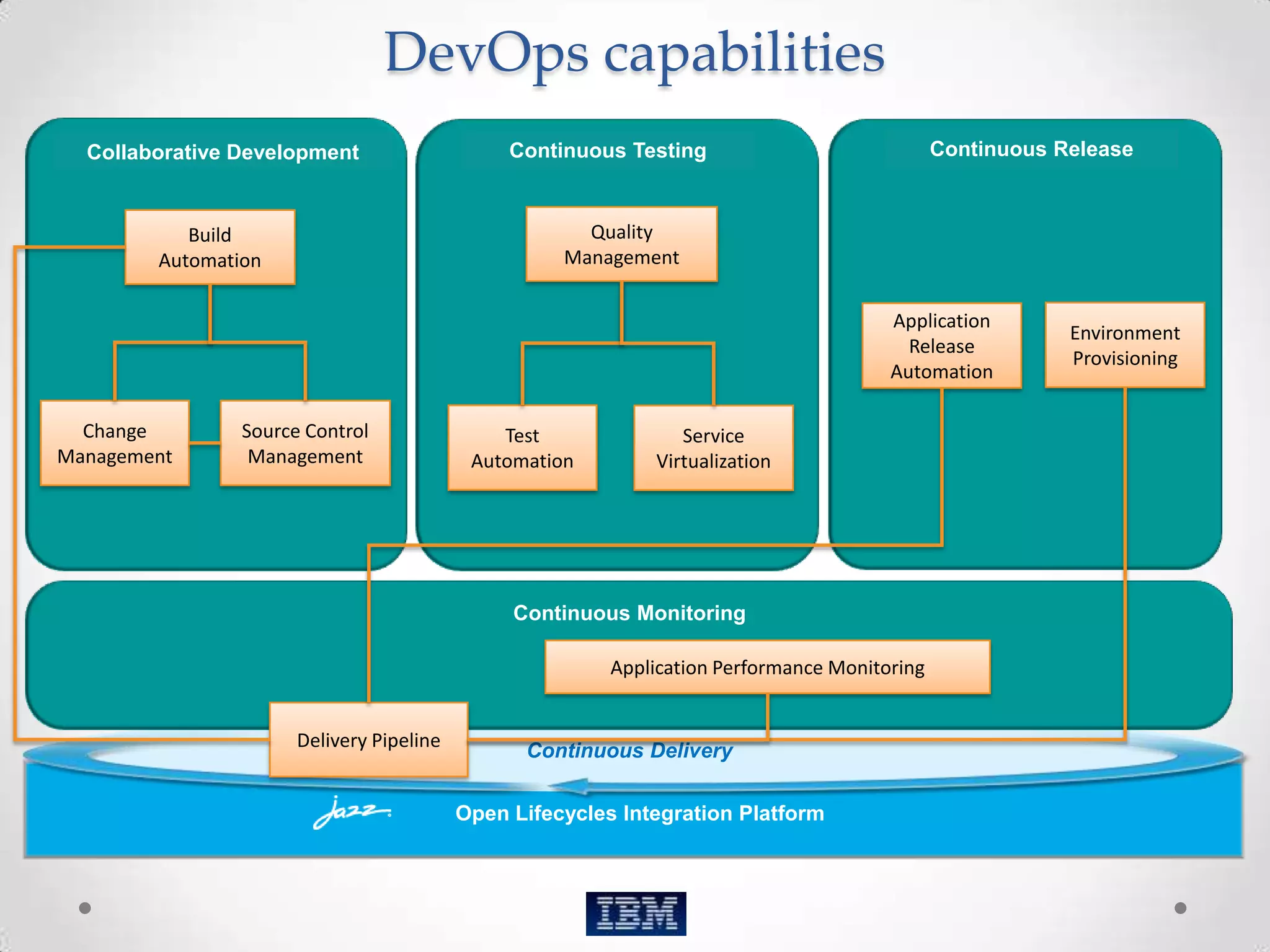
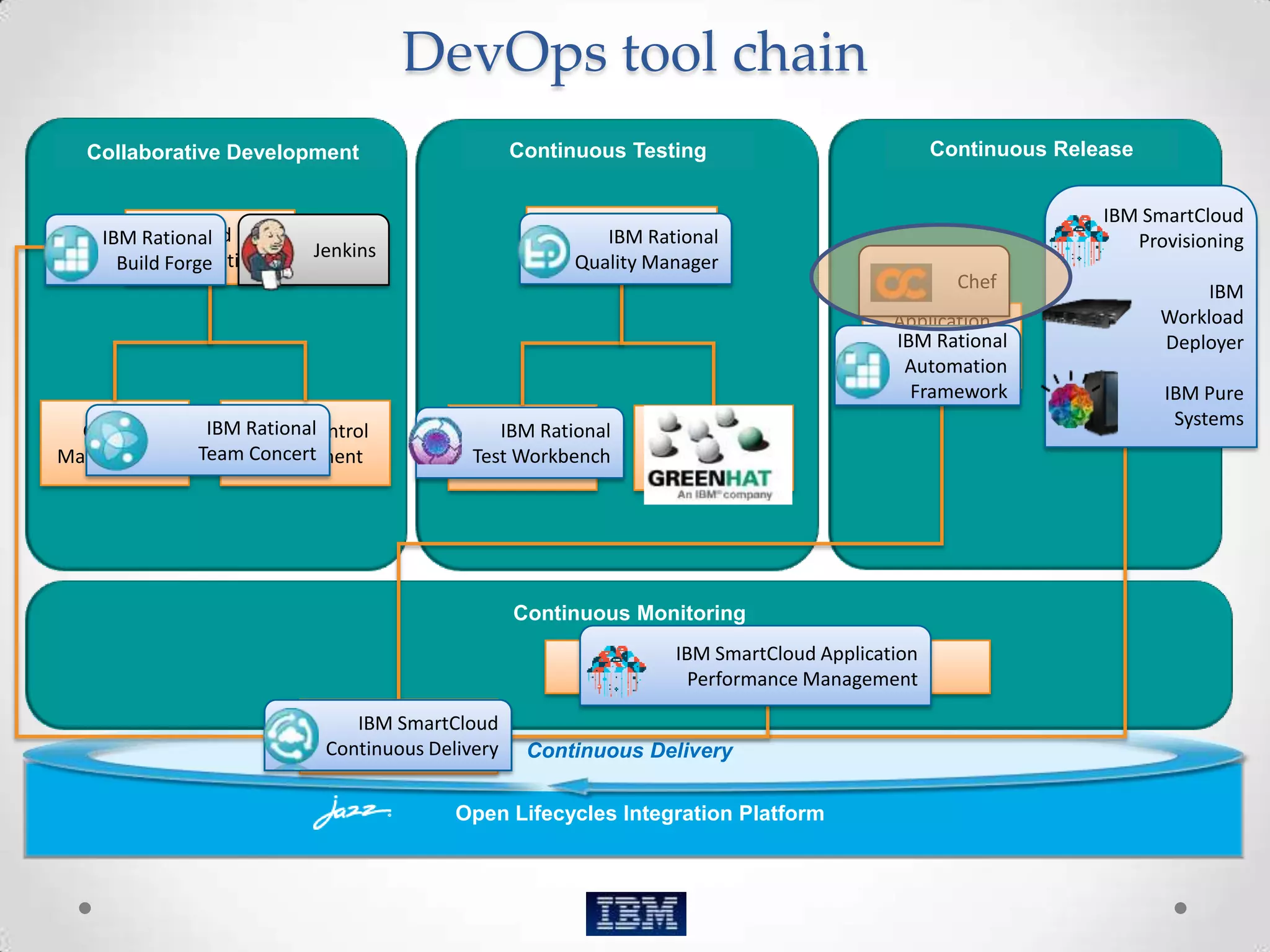
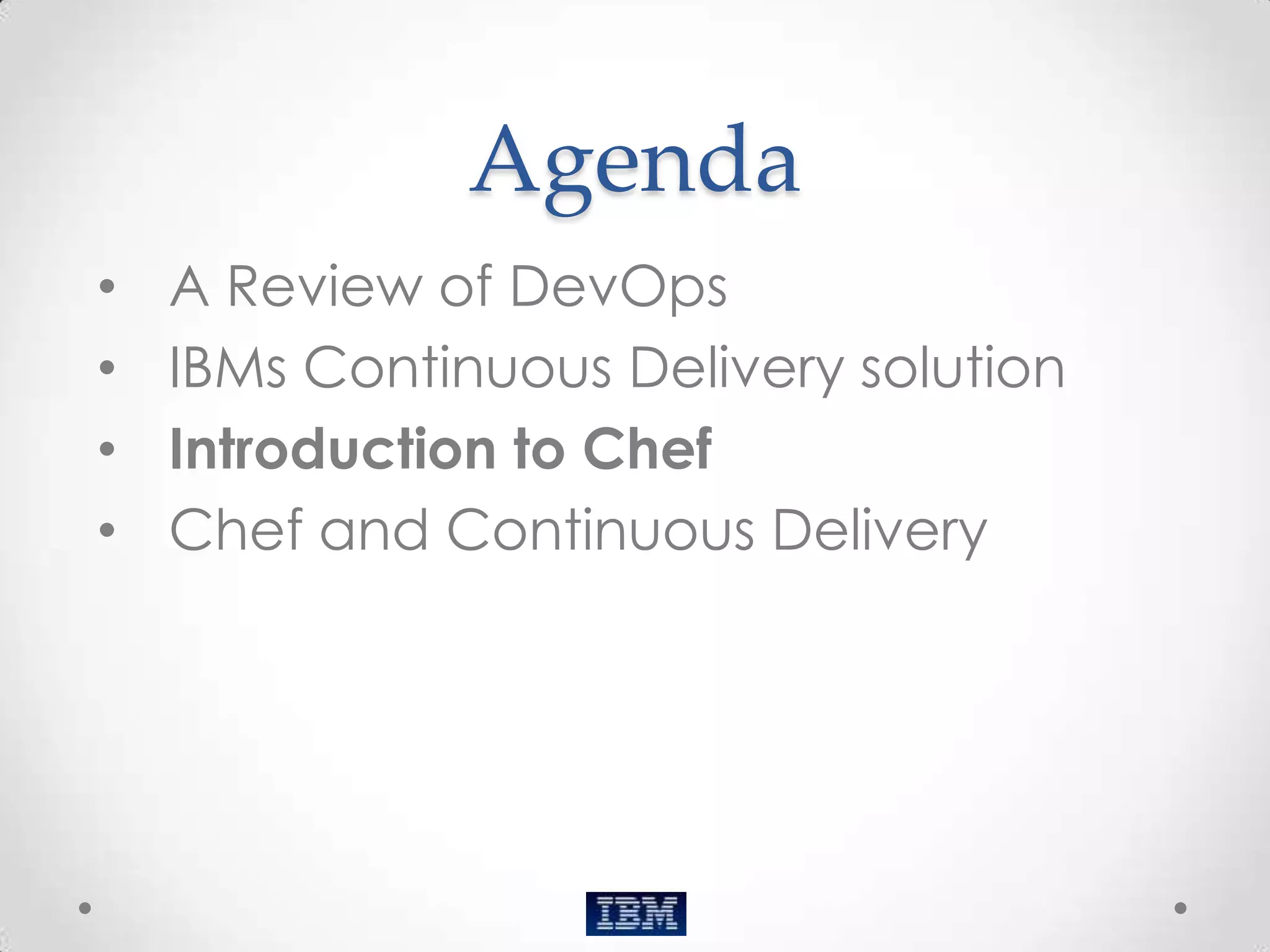
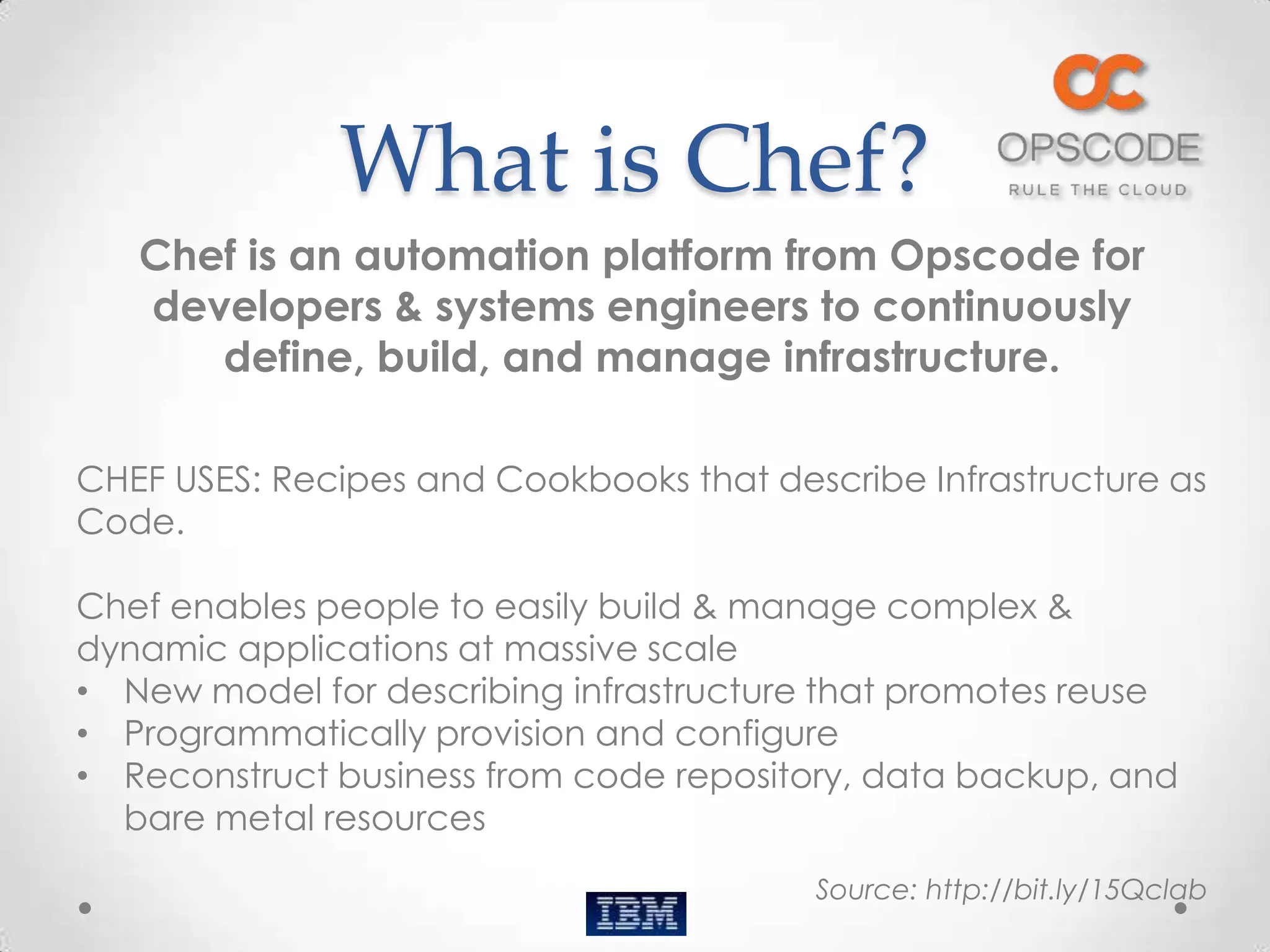
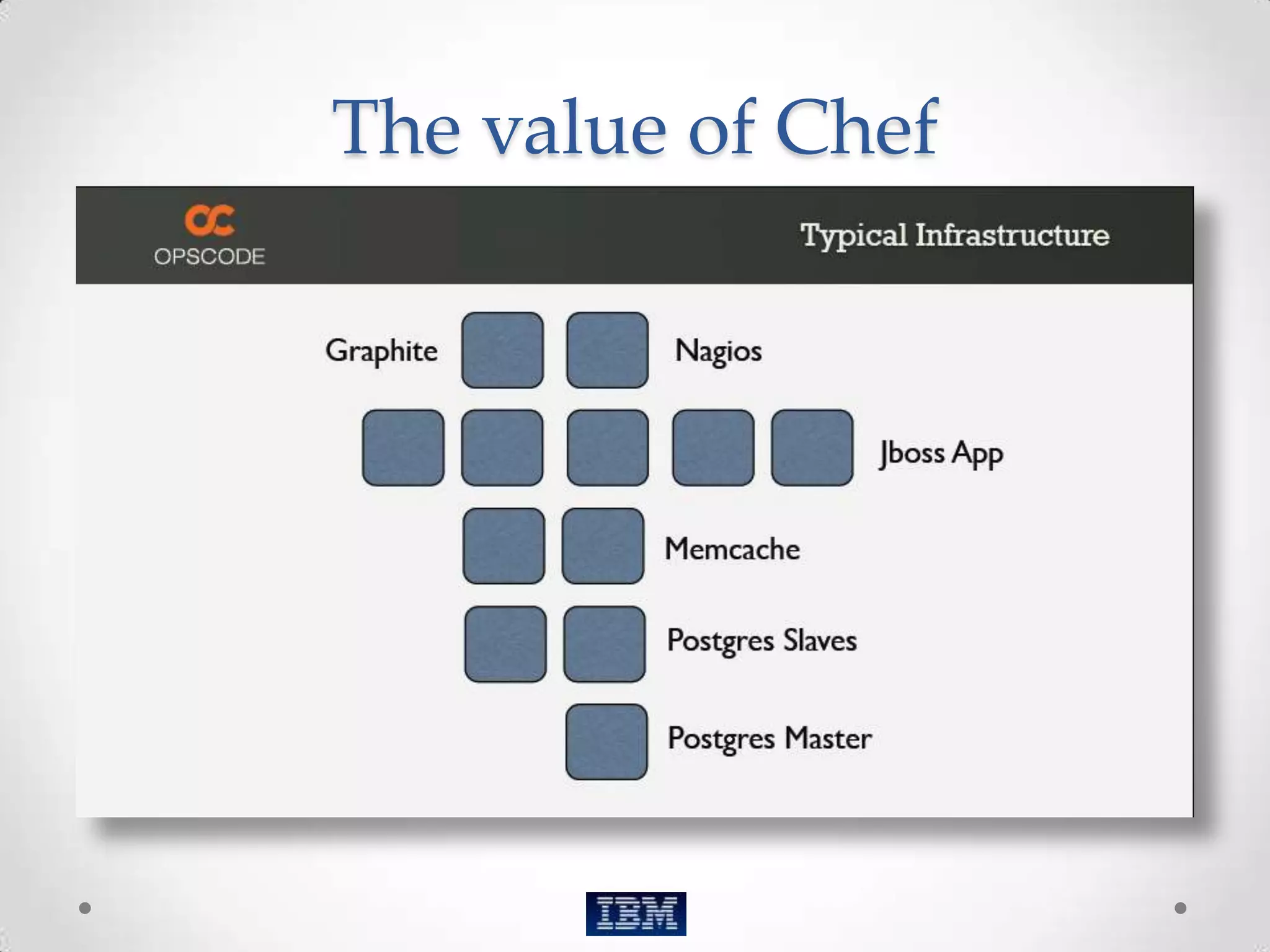
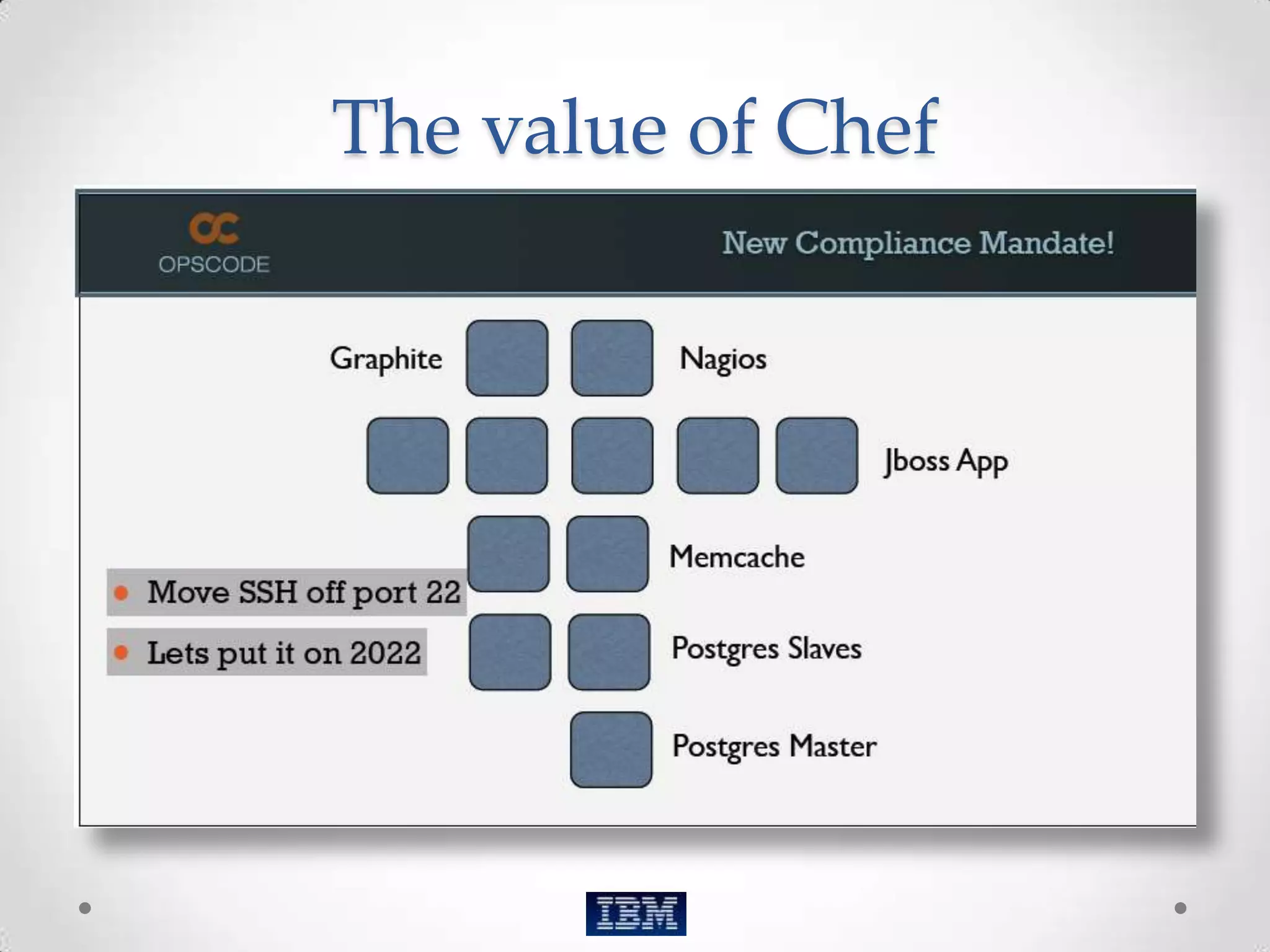
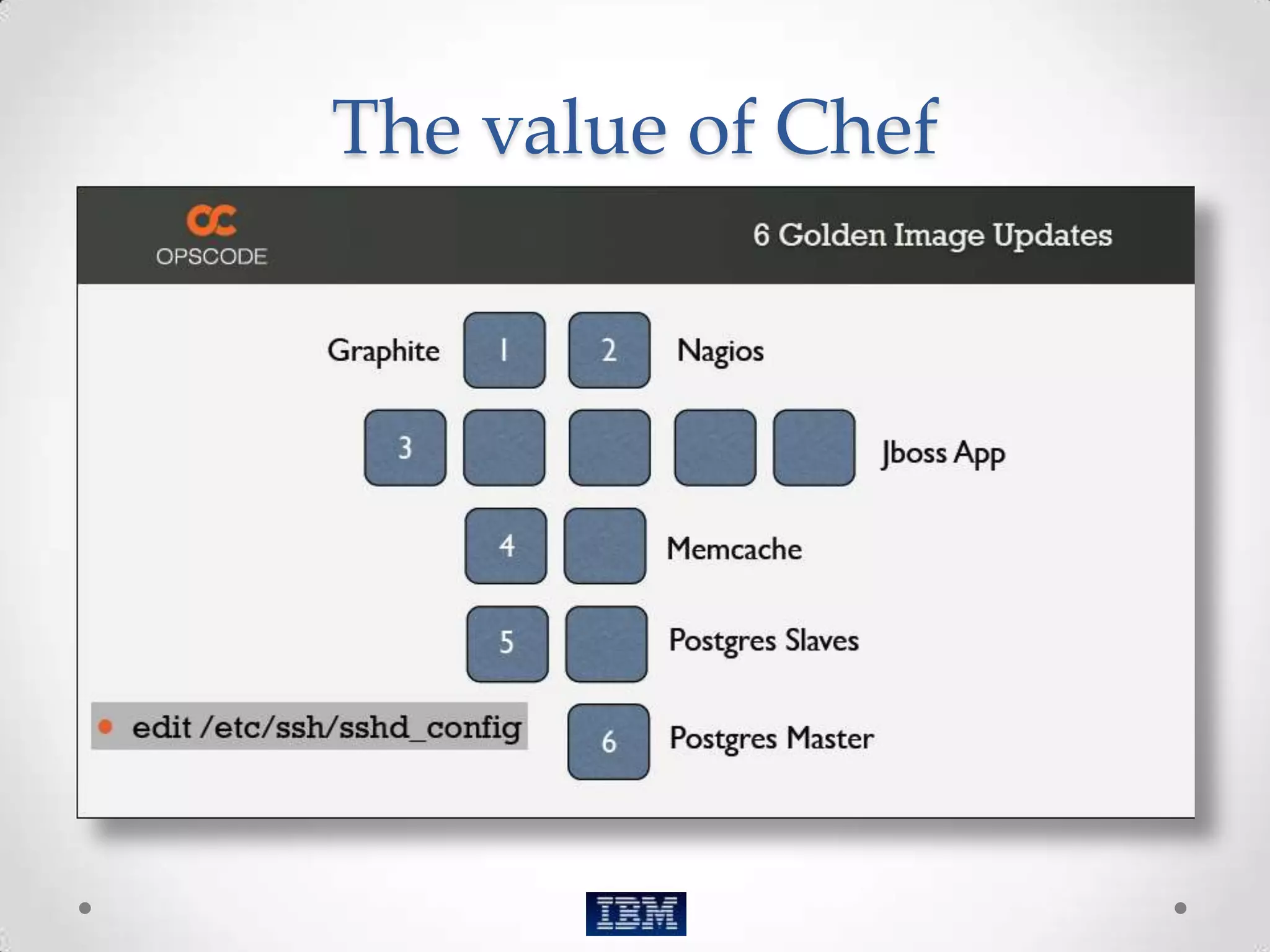
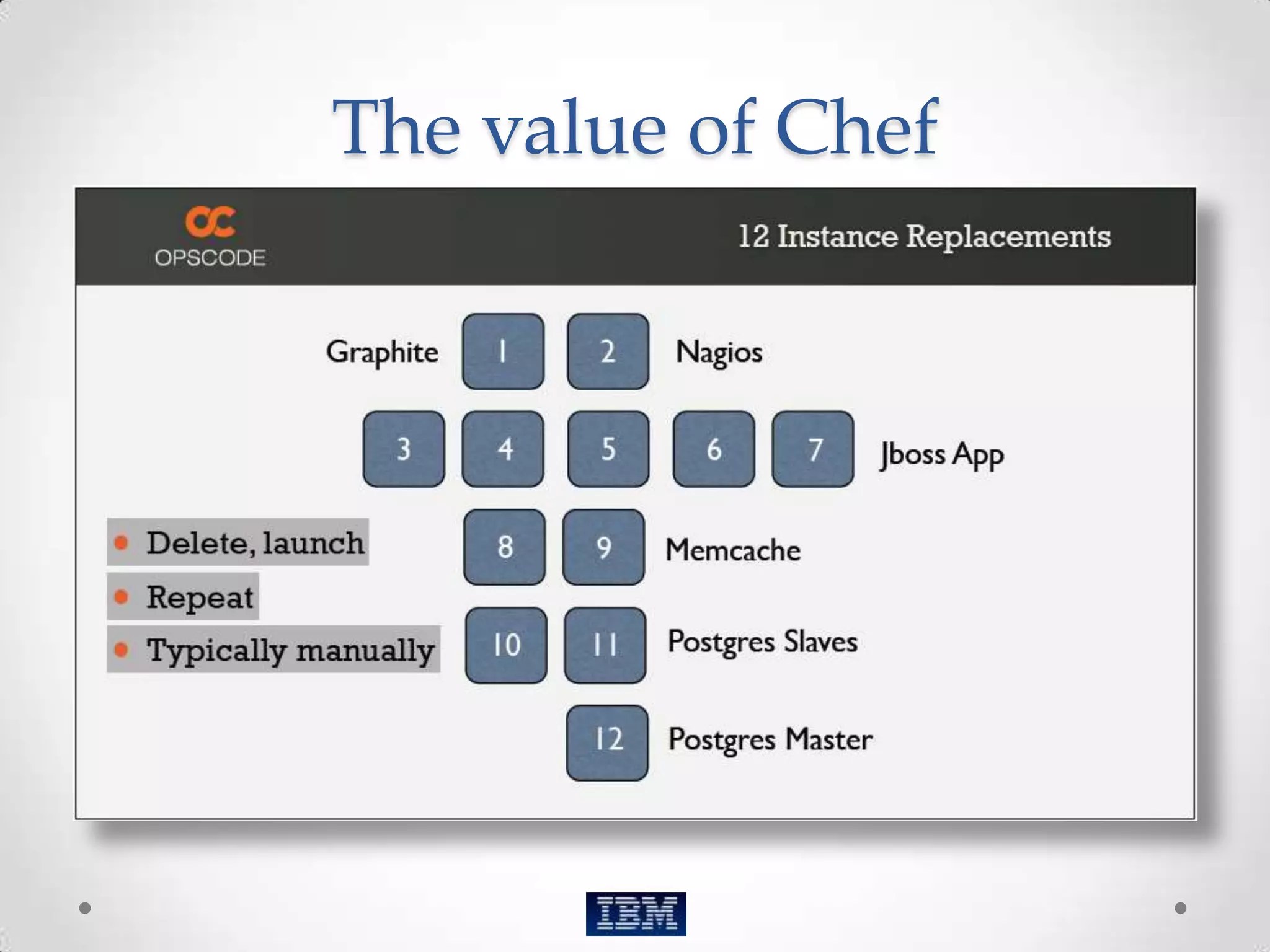
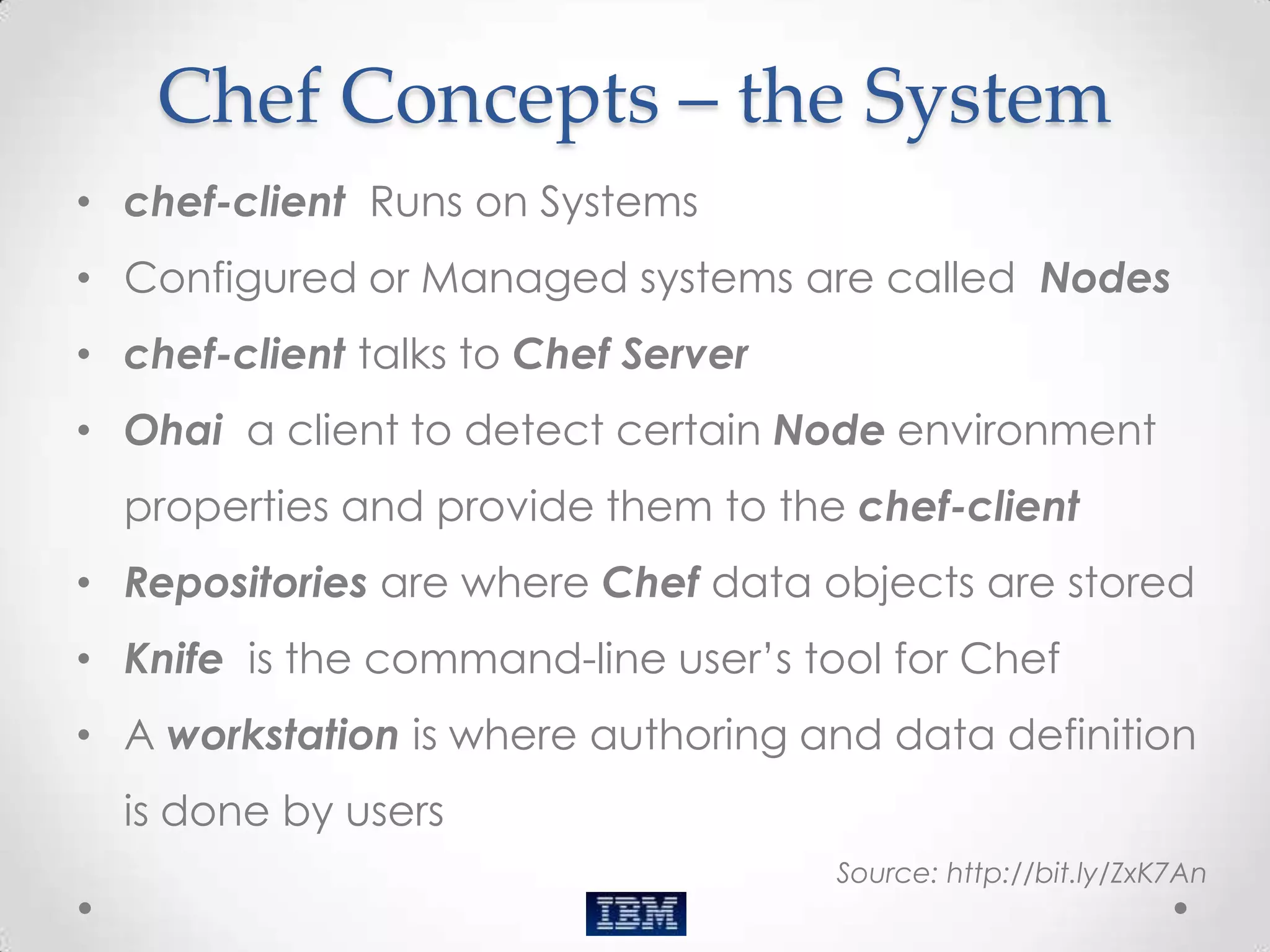
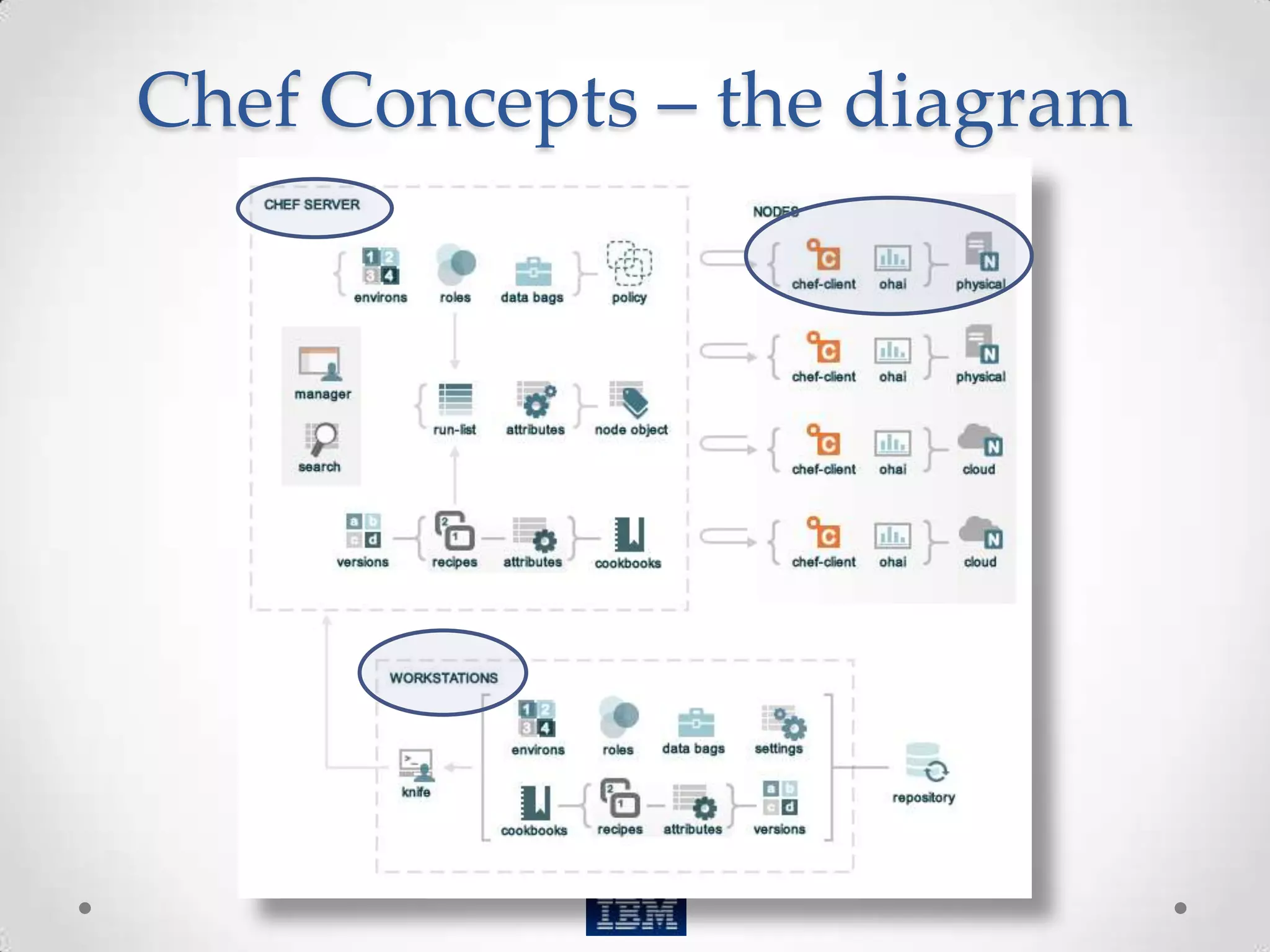
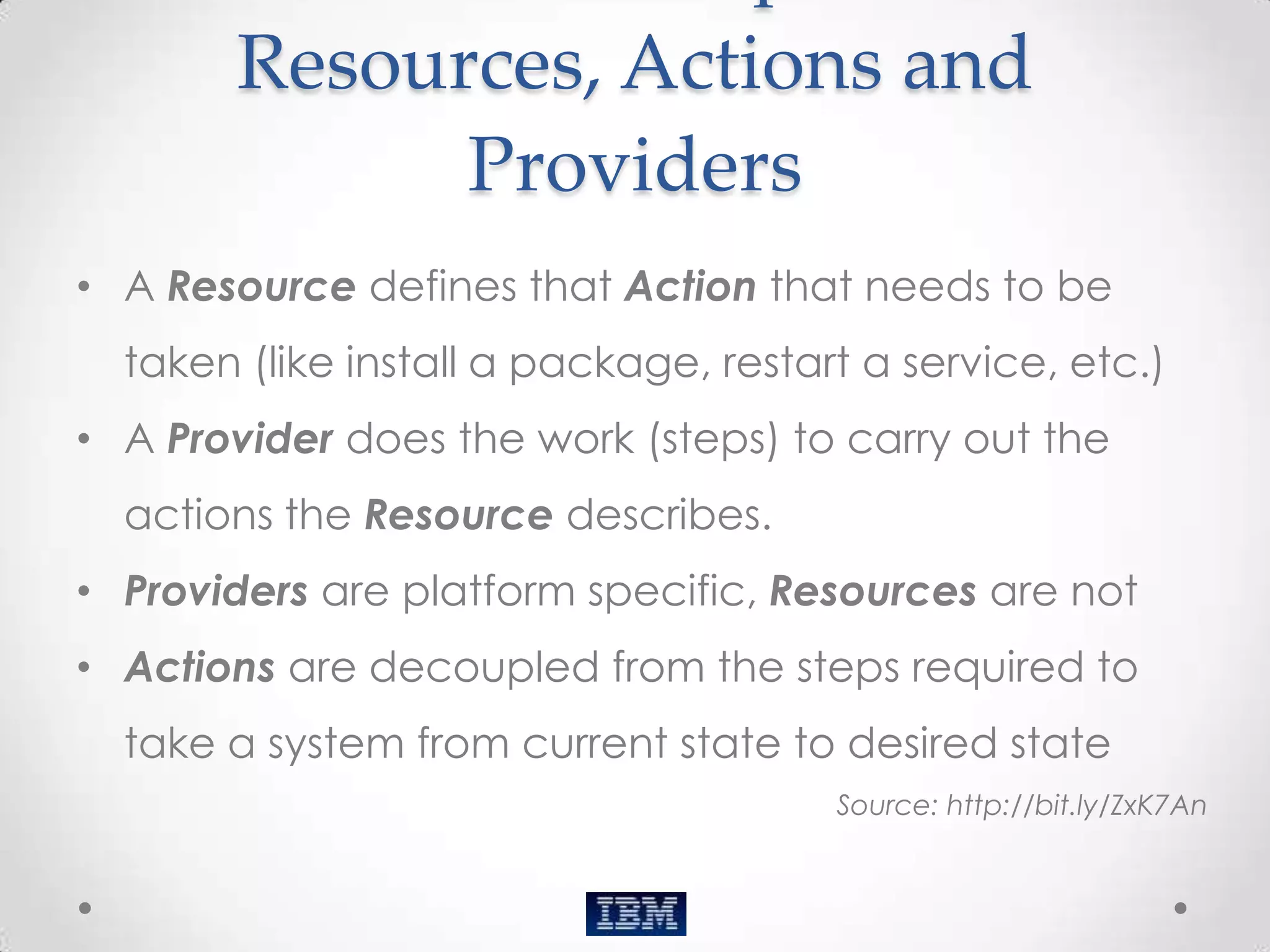
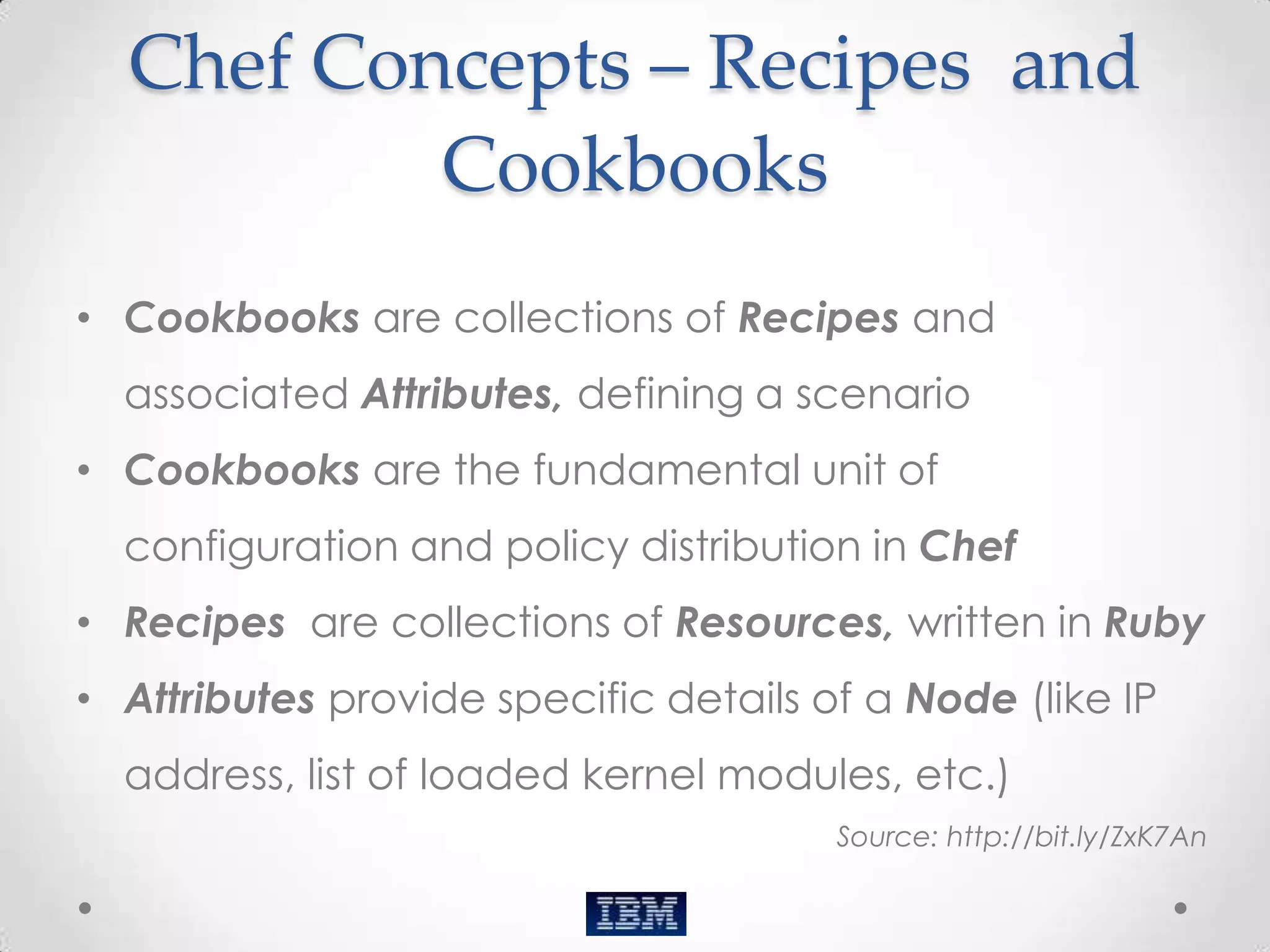
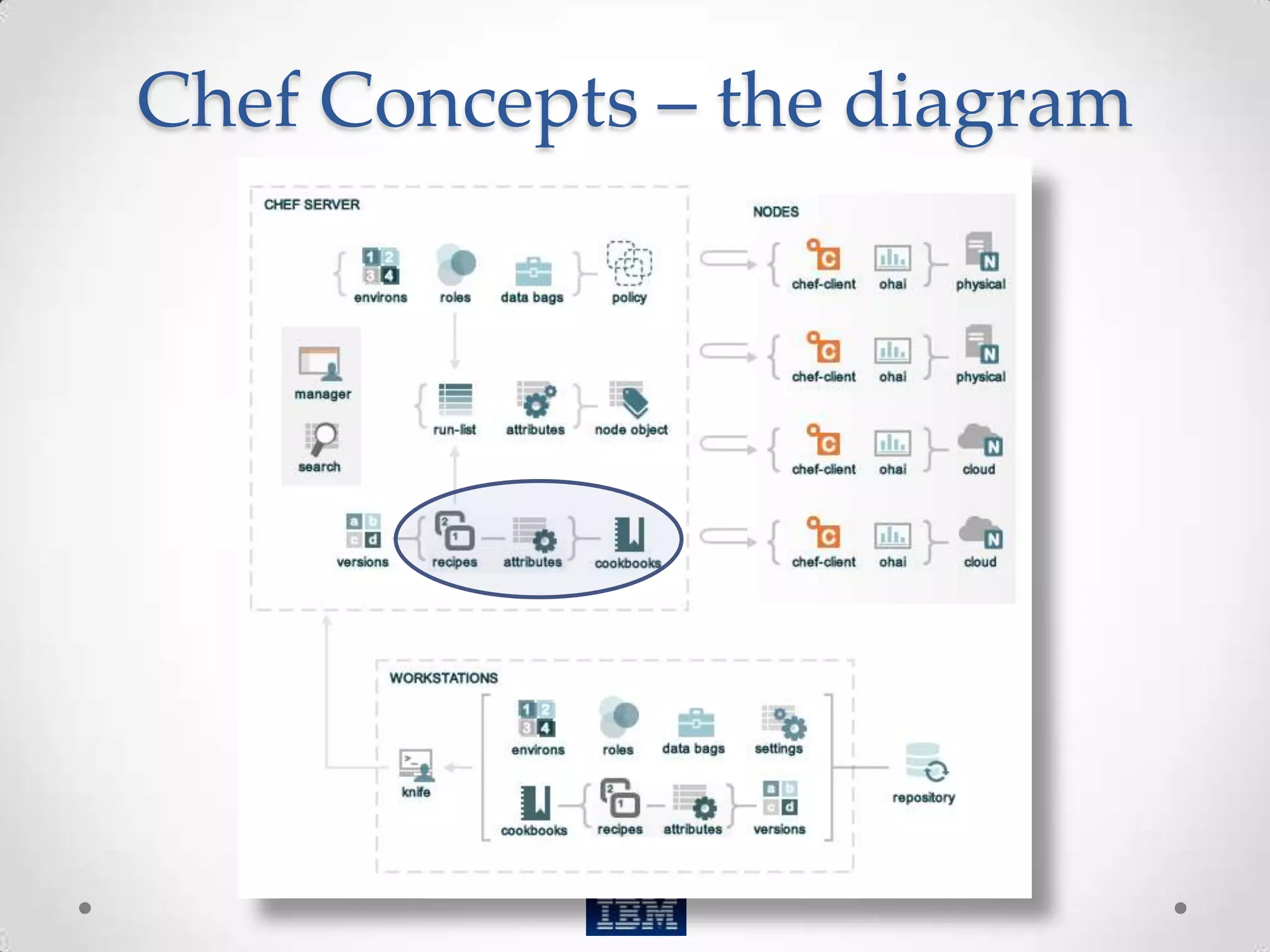
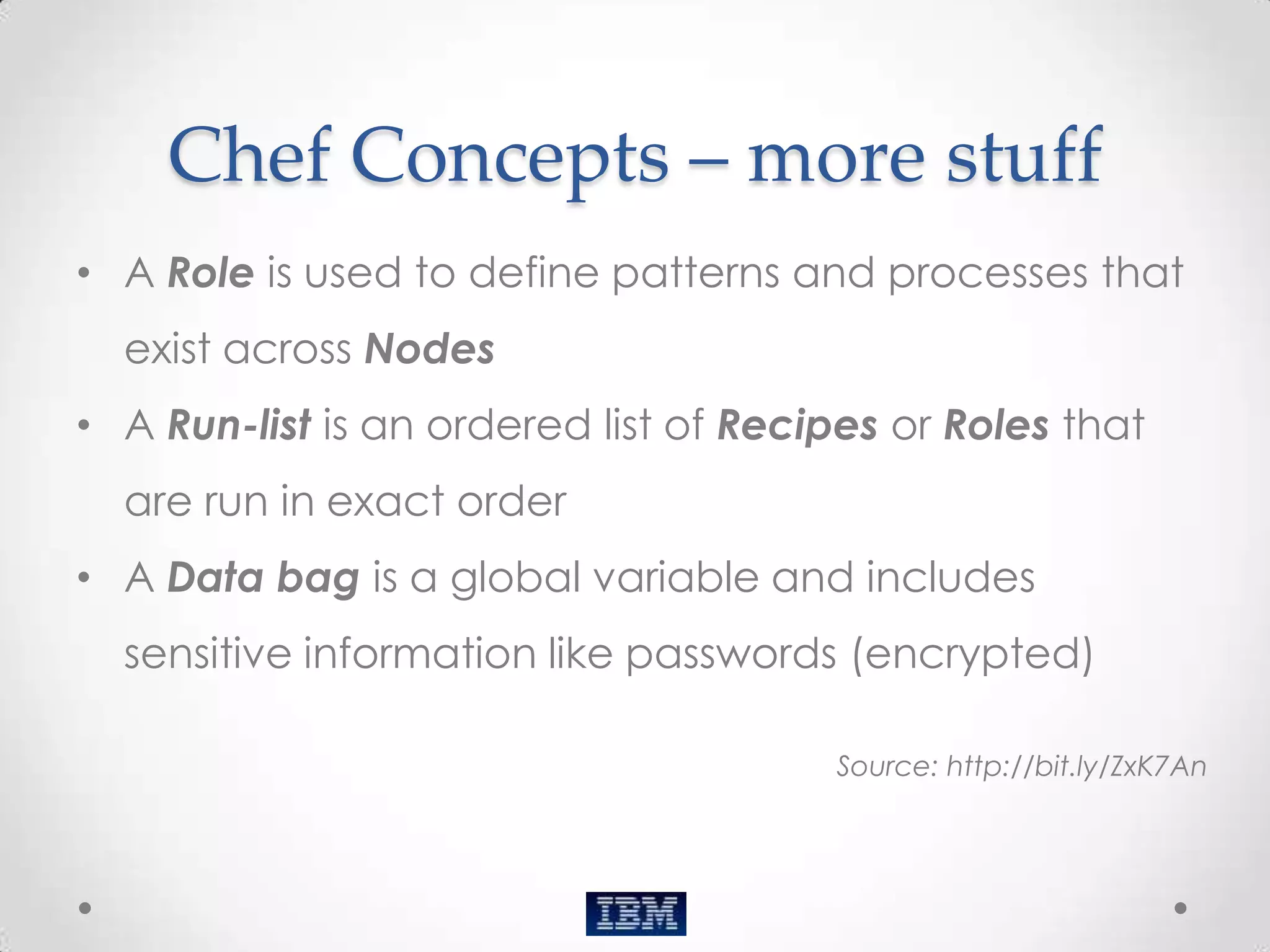
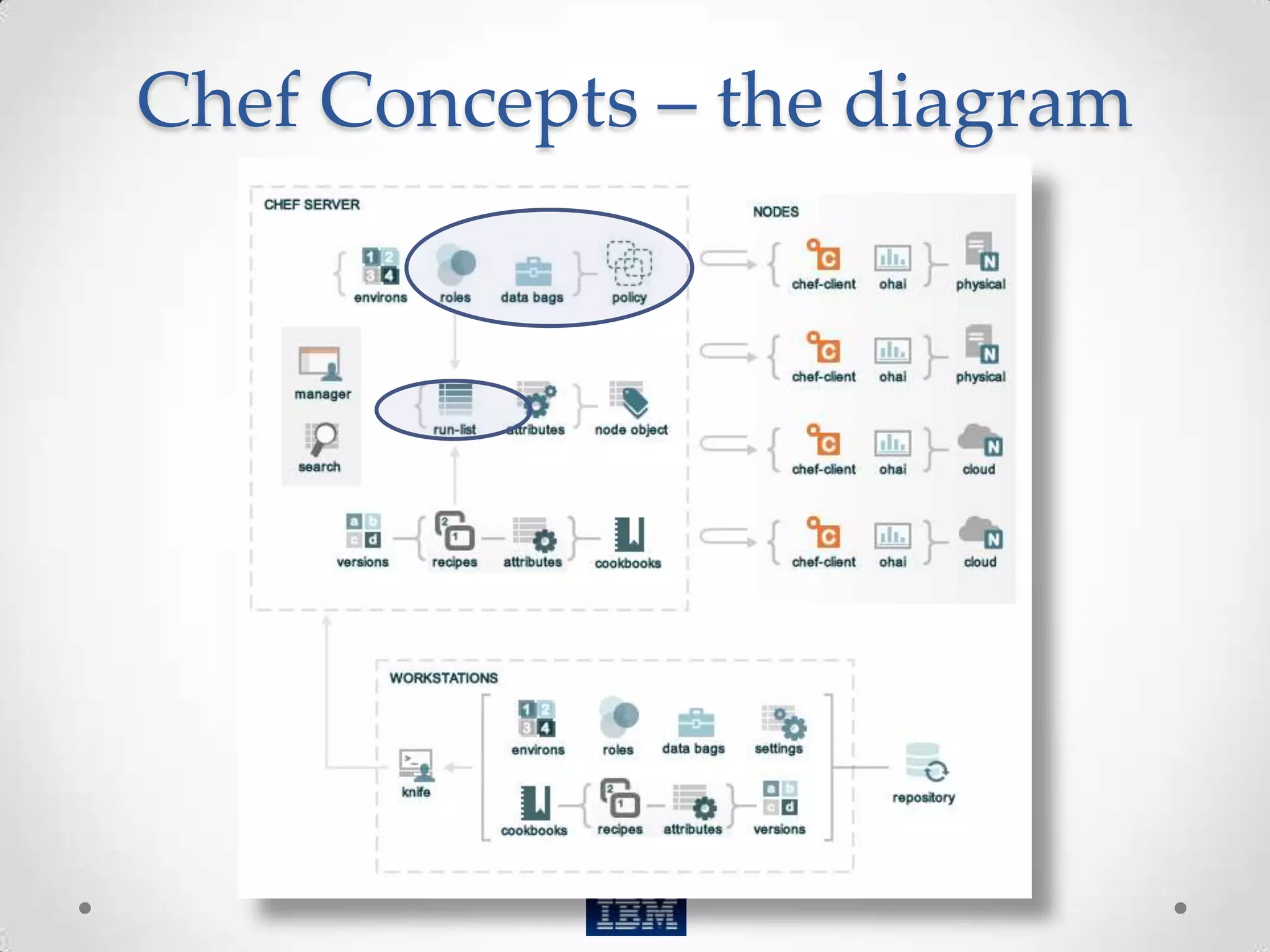
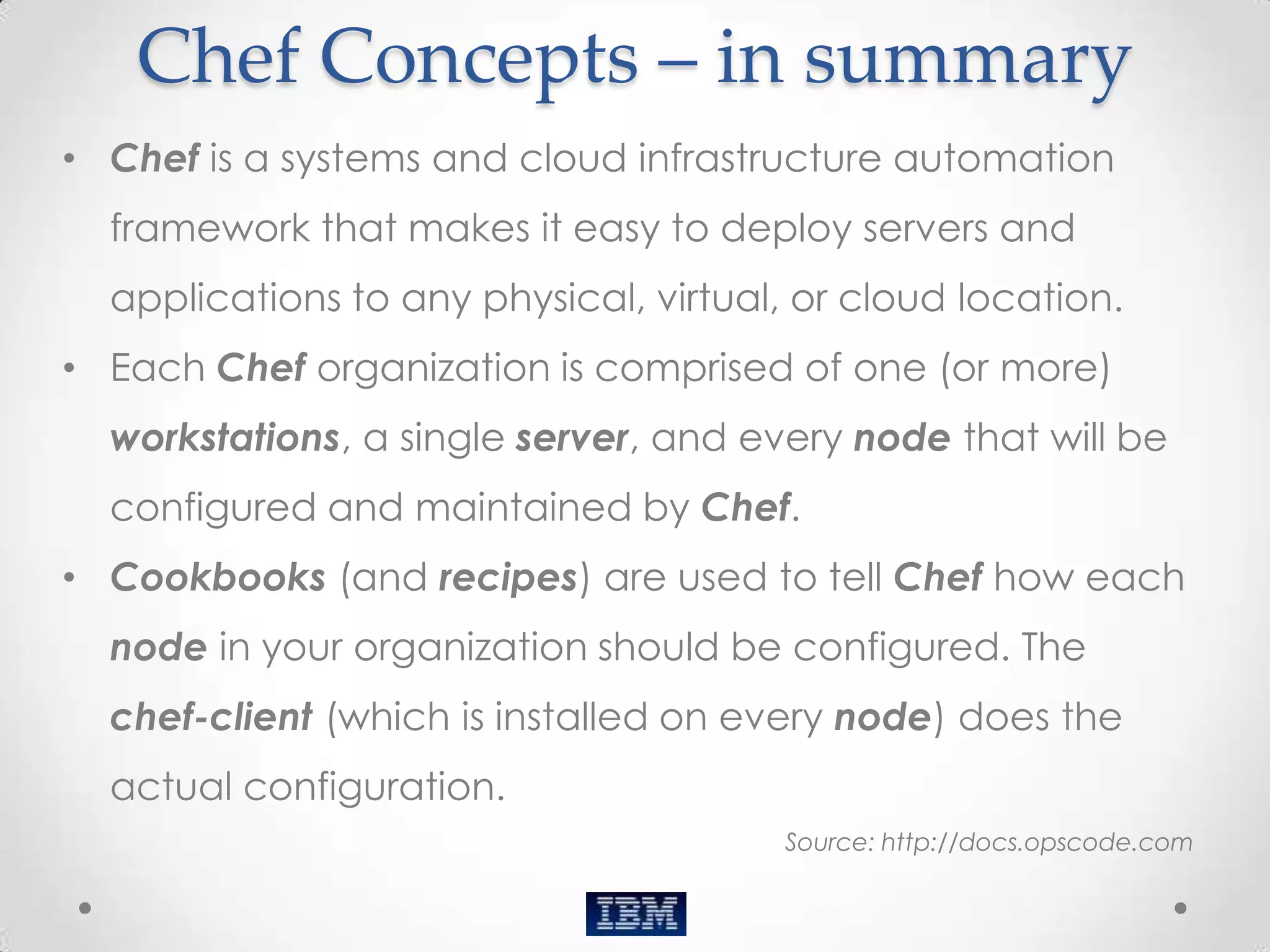
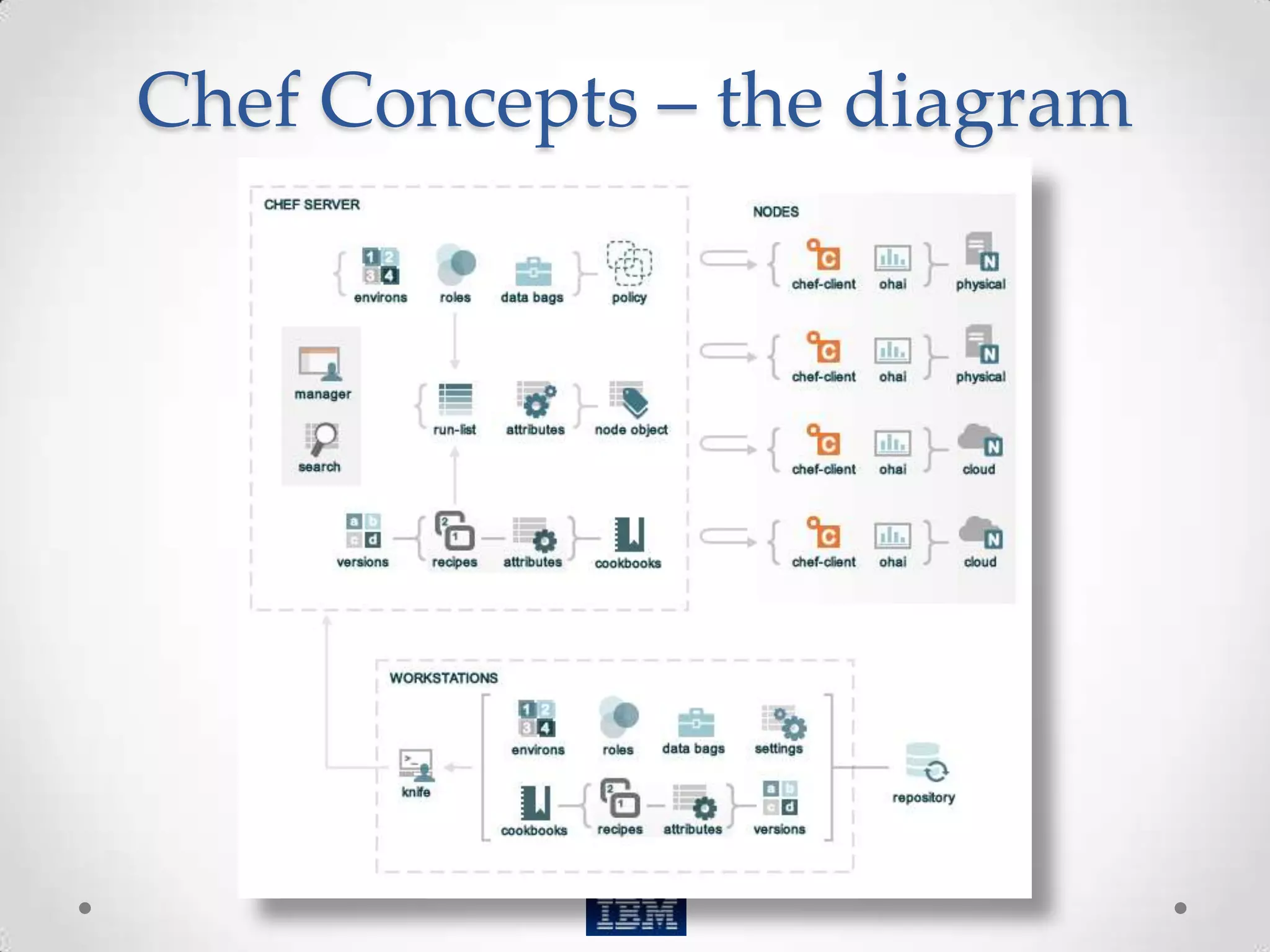
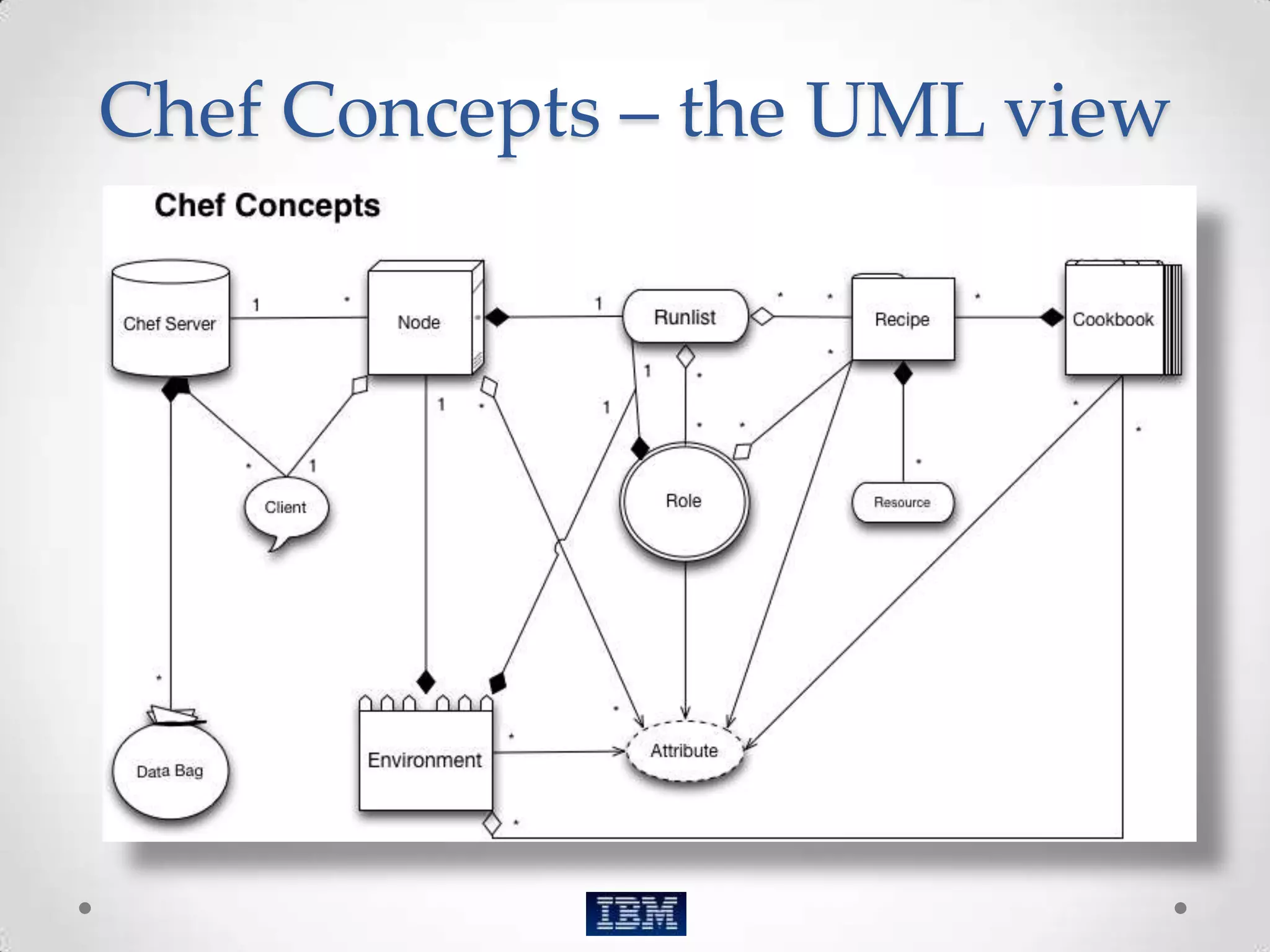
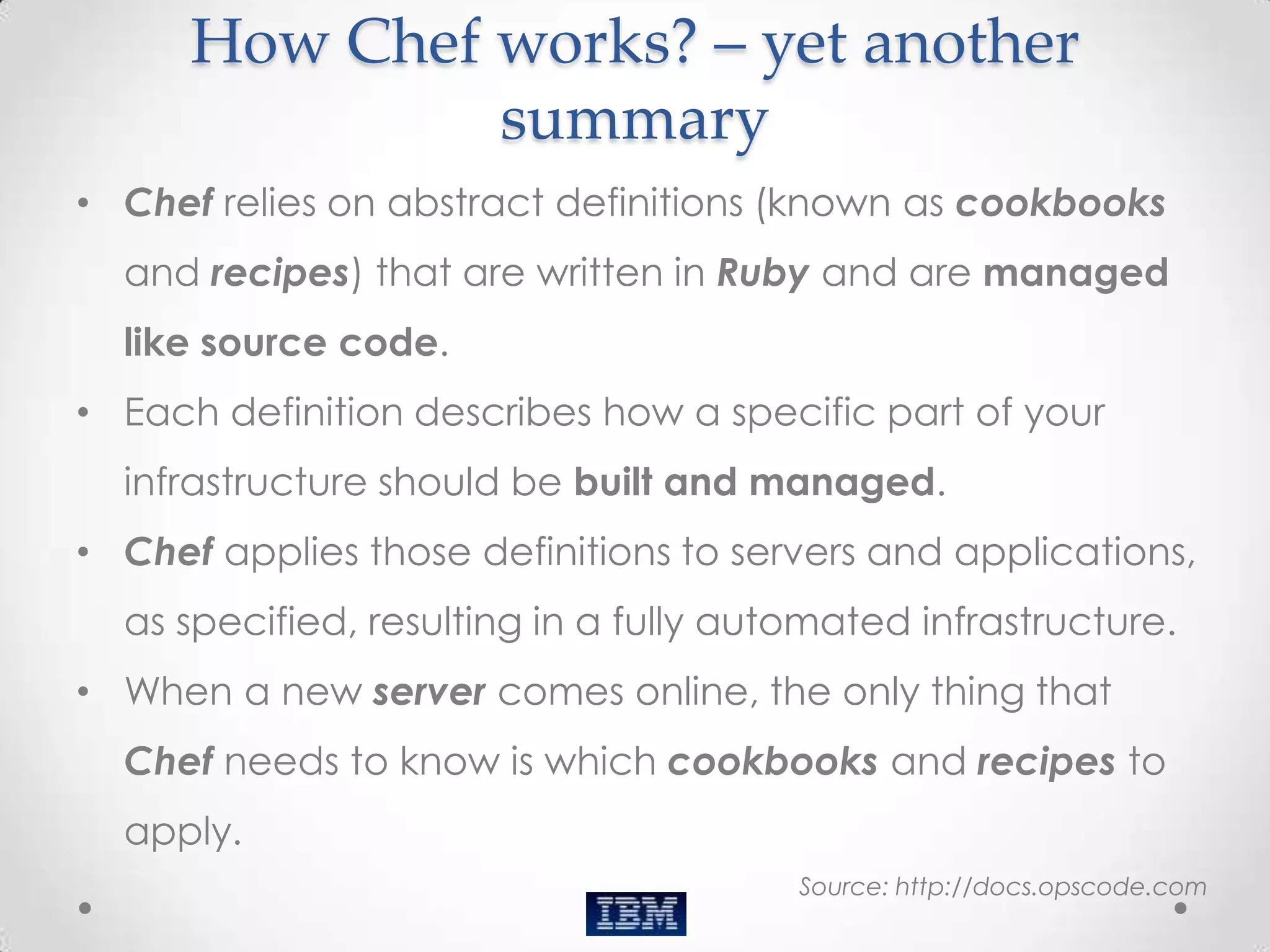
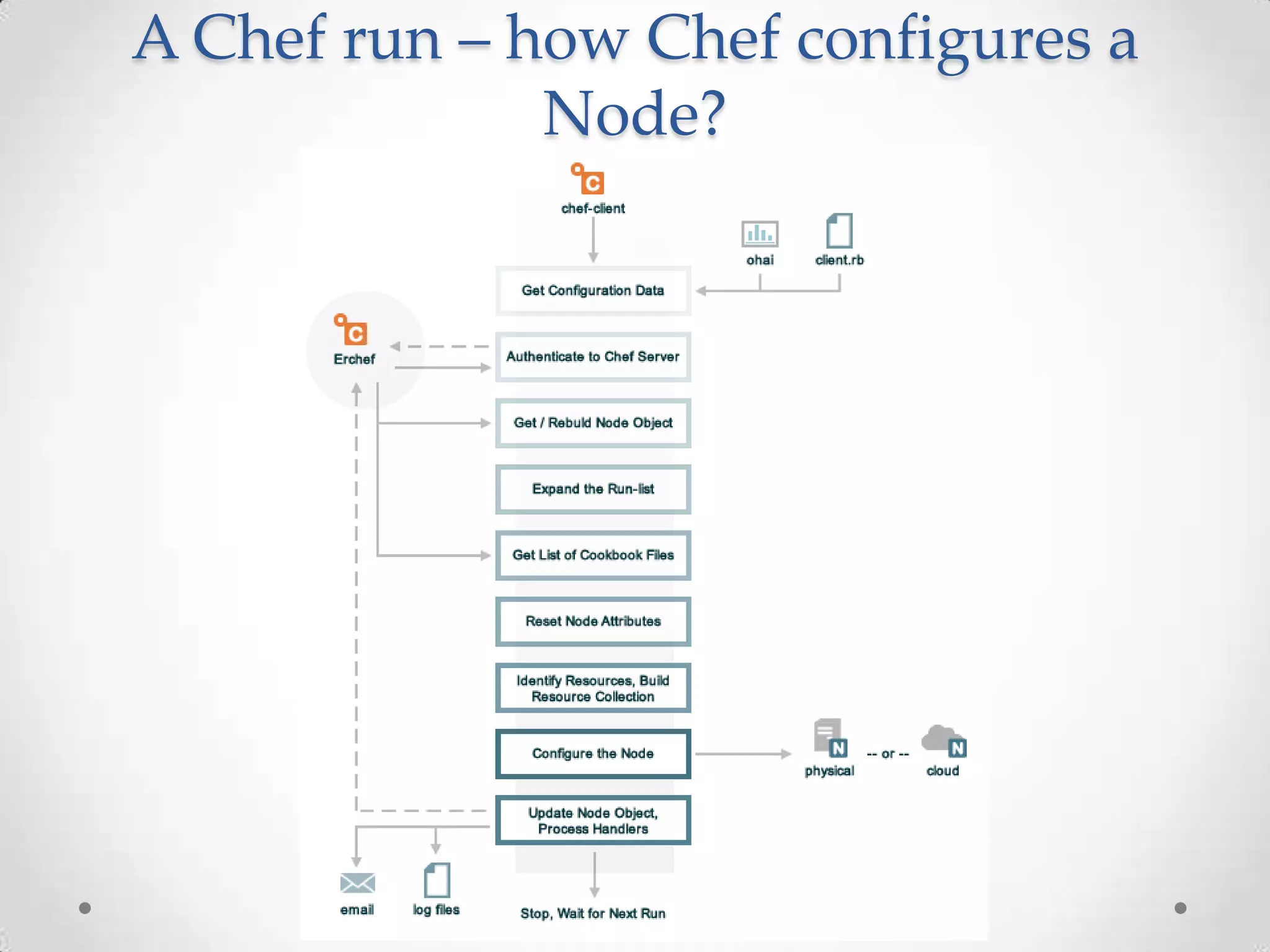
![Chef Recipe Example
bash "install_tomcat6" do
tomcat_version_name = "apache-tomcat-#{node[:tomcat6][:version]}"
tomcat_version_name_tgz = "#{tomcat_version_name}.tar.gz"
user "root"
cwd usr_share_dir
not_if do ::File.exists?(::File.join(usr_share_dir,tomcat_version_name))
end
code <<-EOH
wget http://archive.apache.org/dist/tomcat/tomcat-
6/v#{node[:tomcat6][:version]}/bin/#{tomcat_version_name_tgz}
tar -zxf #{tomcat_version_name_tgz}
rm #{tomcat_version_name_tgz}
chown -R #{node[:tomcat6][:user]}:#{node[:tomcat6][:user]}
#{tomcat_version_name}
EOH
end
Source: http://community.opscode.com/cookbooks/tomcat6/source](https://image.slidesharecdn.com/cheffordevops-anintroduction-130402100124-phpapp01/75/Chef-for-DevOps-an-Introduction-40-2048.jpg)
![Chef attributes file Example
require 'openssl'
pw = String.new
while pw.length < 20
pw << OpenSSL::Random.random_bytes(1).gsub(/W/, '')
end
# Where the various parts of tomcat6 are
case platform
when "centos"
set[:tomcat6][:start] = "/etc/init.d/tomcat6 start"
set[:tomcat6][:stop] = "/etc/init.d/tomcat6 stop"
set[:tomcat6][:restart] = "/etc/init.d/tomcat6 restart"
set[:tomcat6][:home] = "/usr/share/tomcat6" #don't use trailing slash. it
breaks init script
set[:tomcat6][:dir] = "/etc/tomcat6/"
set[:tomcat6][:conf] = "/etc/tomcat6"
set[:tomcat6][:temp] = "/var/tmp/tomcat6"
set[:tomcat6][:logs] = "/var/log/tomcat6"
set[:tomcat6][:webapp_base_dir] = "/srv/tomcat6/"
set[:tomcat6][:webapps] = File.join(tomcat6[:webapp_base_dir],"webapps")
set[:tomcat6][:user] = "tomcat"
set[:tomcat6][:manager_dir] = File.join(tomcat6[:home],"webapps/manager")
set[:tomcat6][:port] = 8080
set[:tomcat6][:ssl_port] = 8433
Source: http://community.opscode.com/cookbooks/tomcat6/source](https://image.slidesharecdn.com/cheffordevops-anintroduction-130402100124-phpapp01/75/Chef-for-DevOps-an-Introduction-41-2048.jpg)
